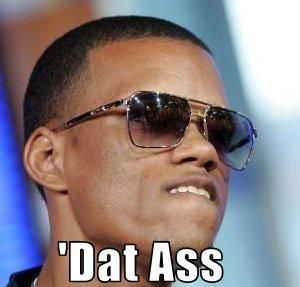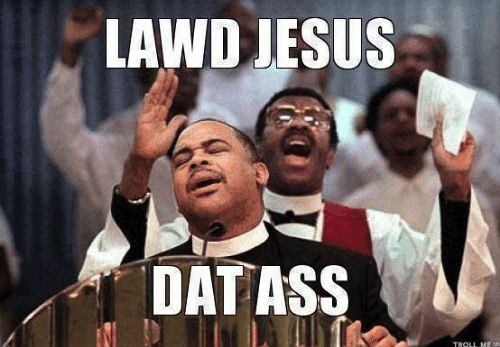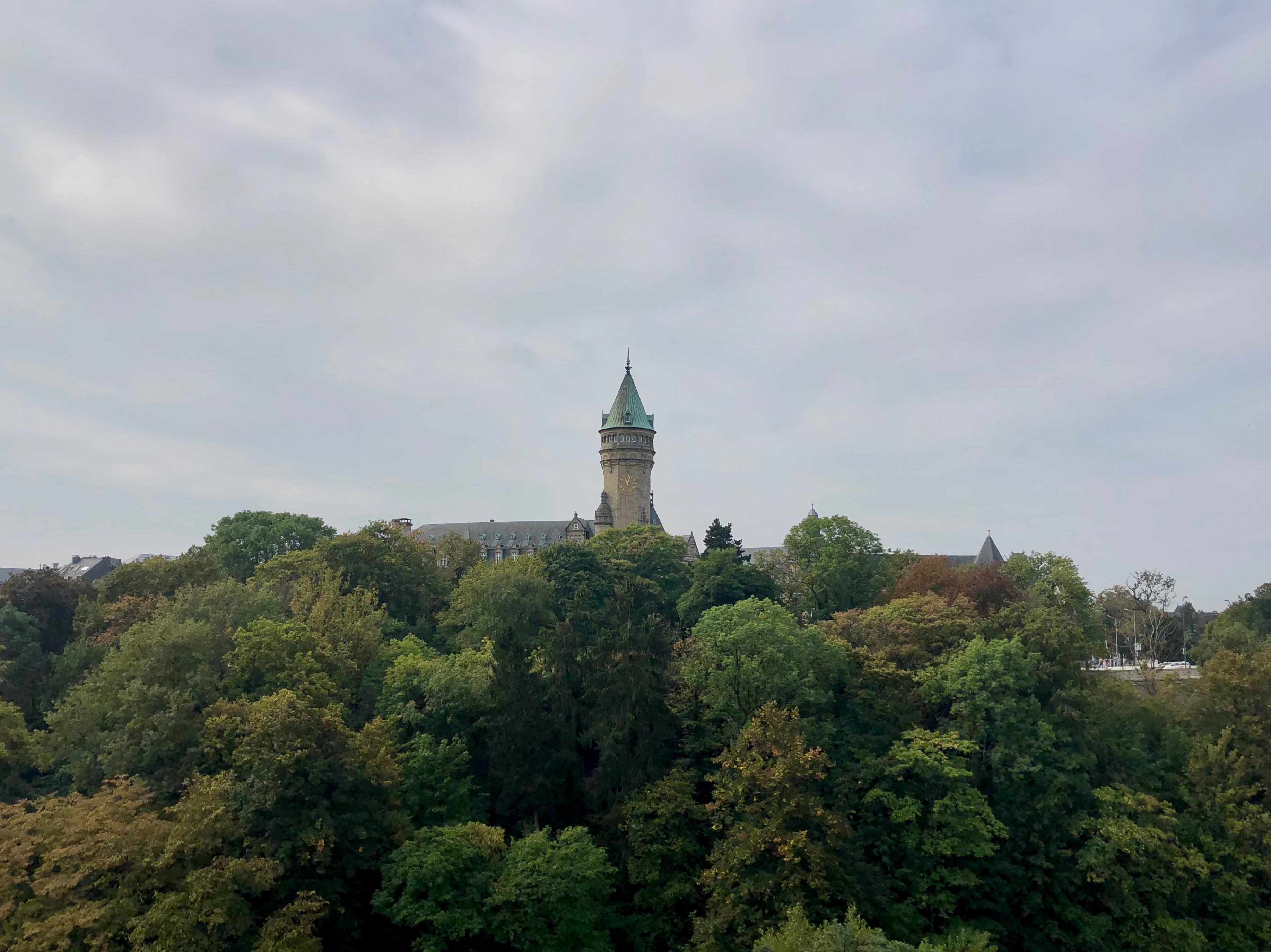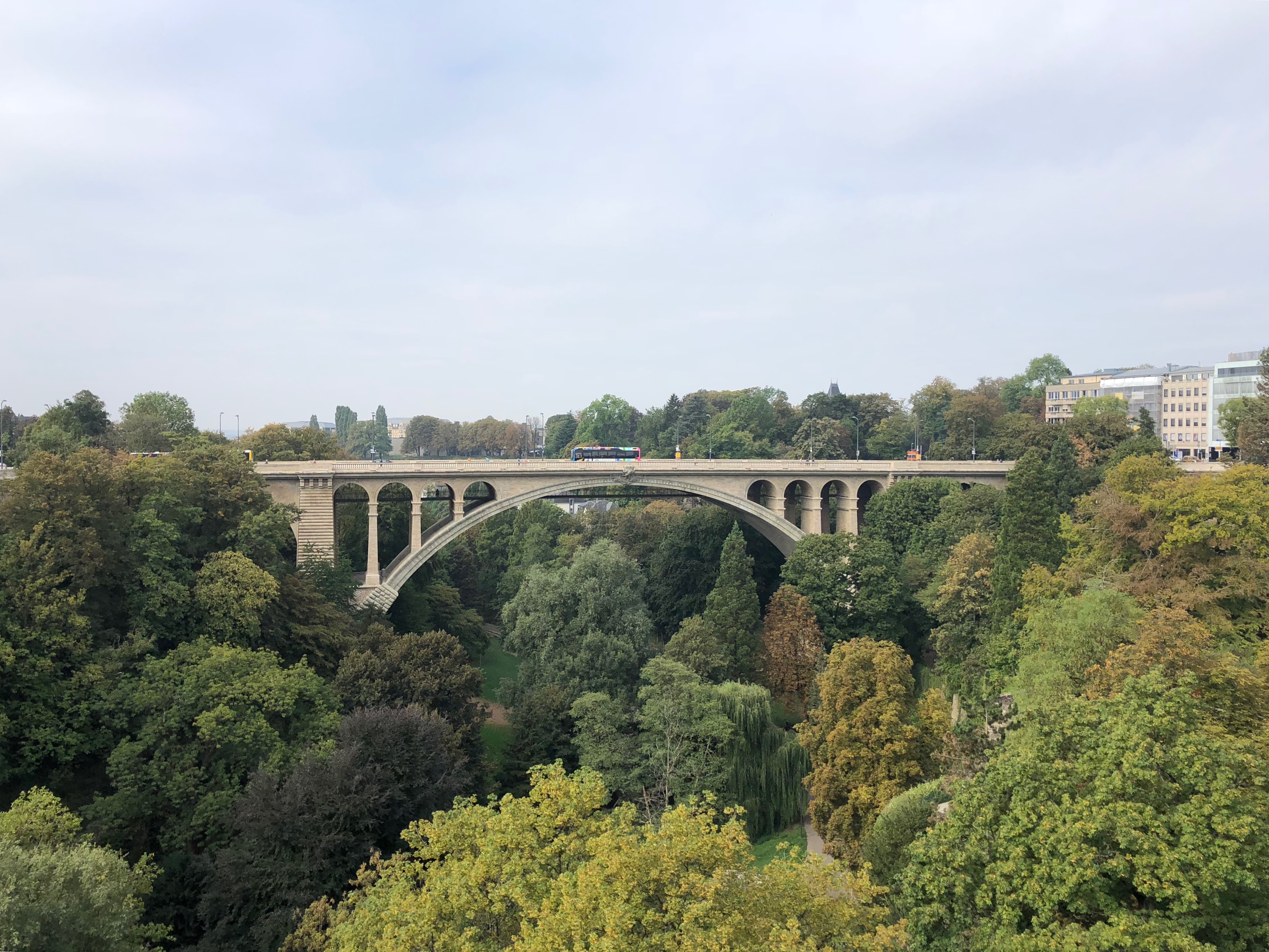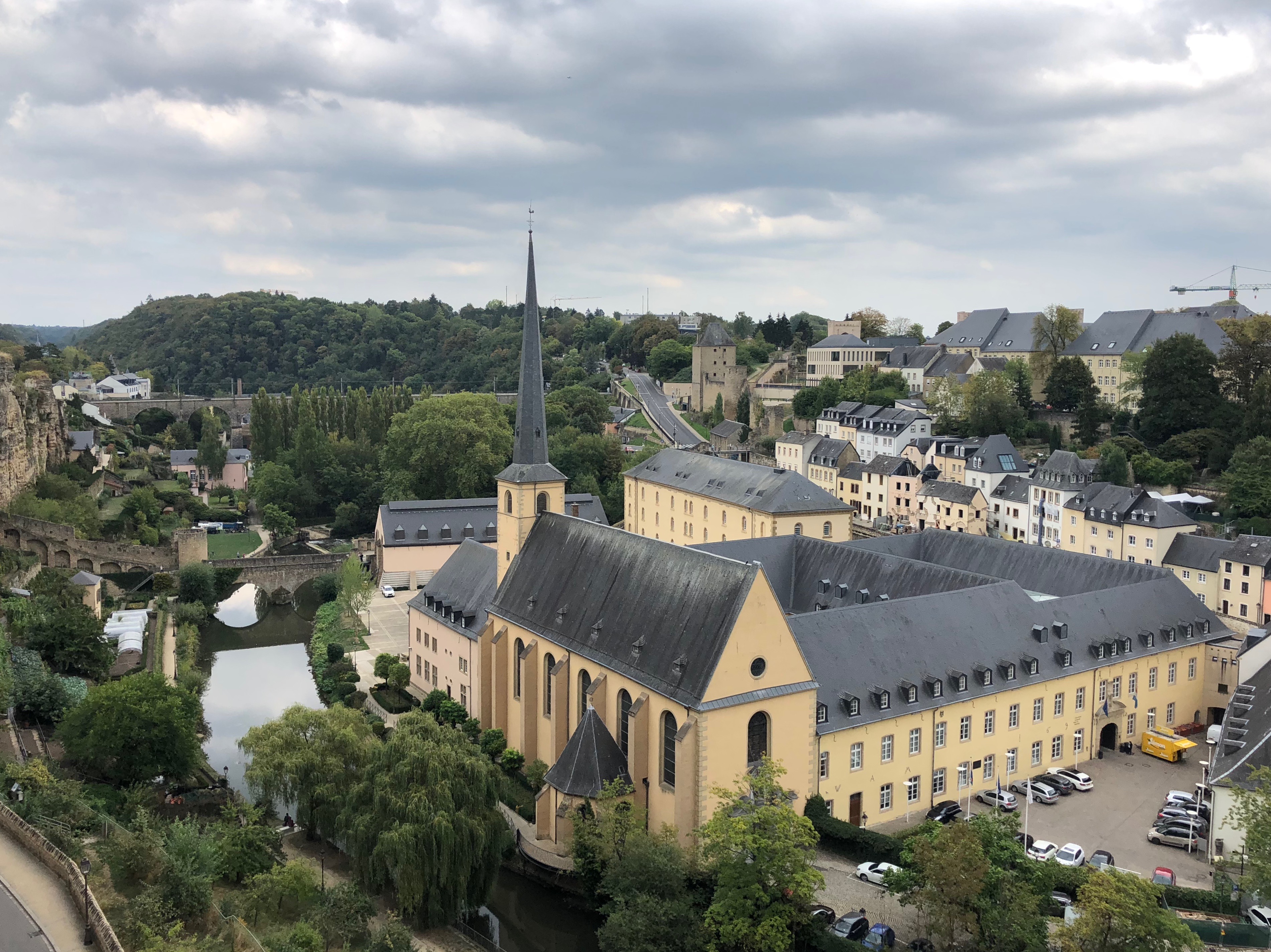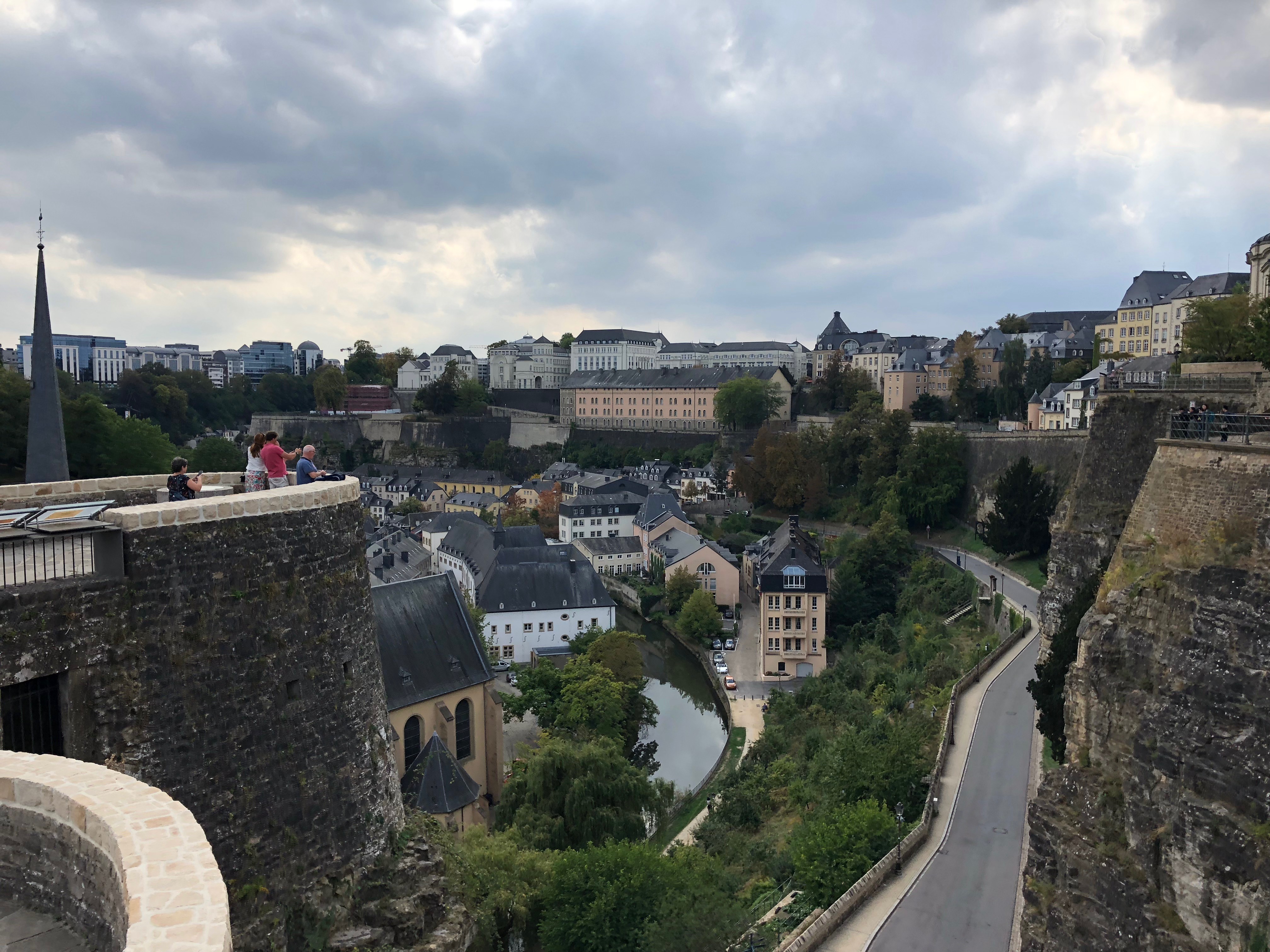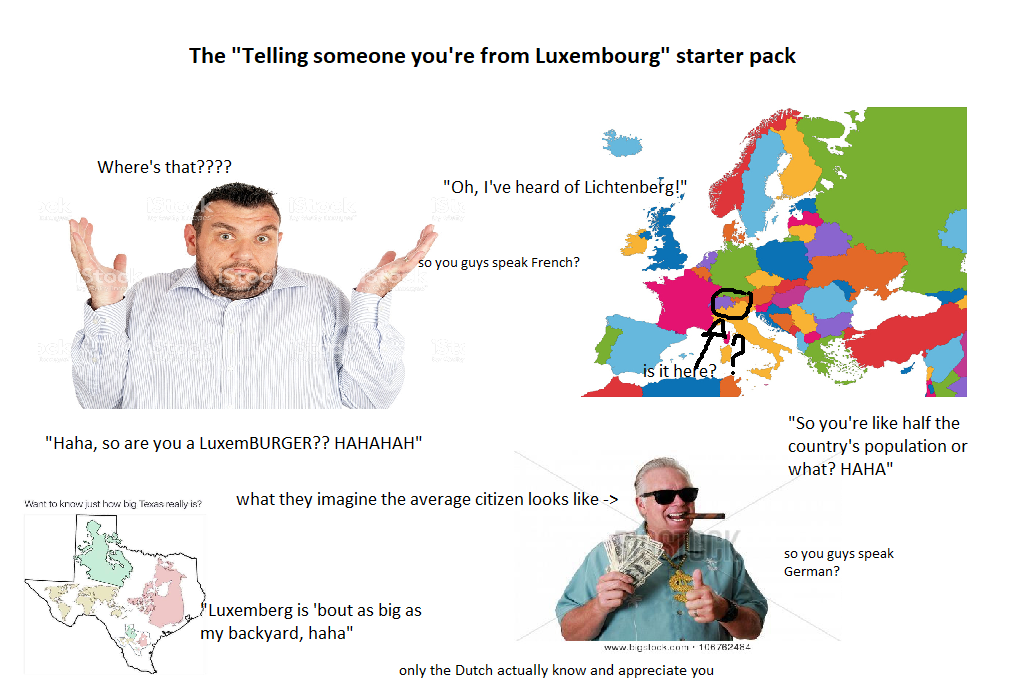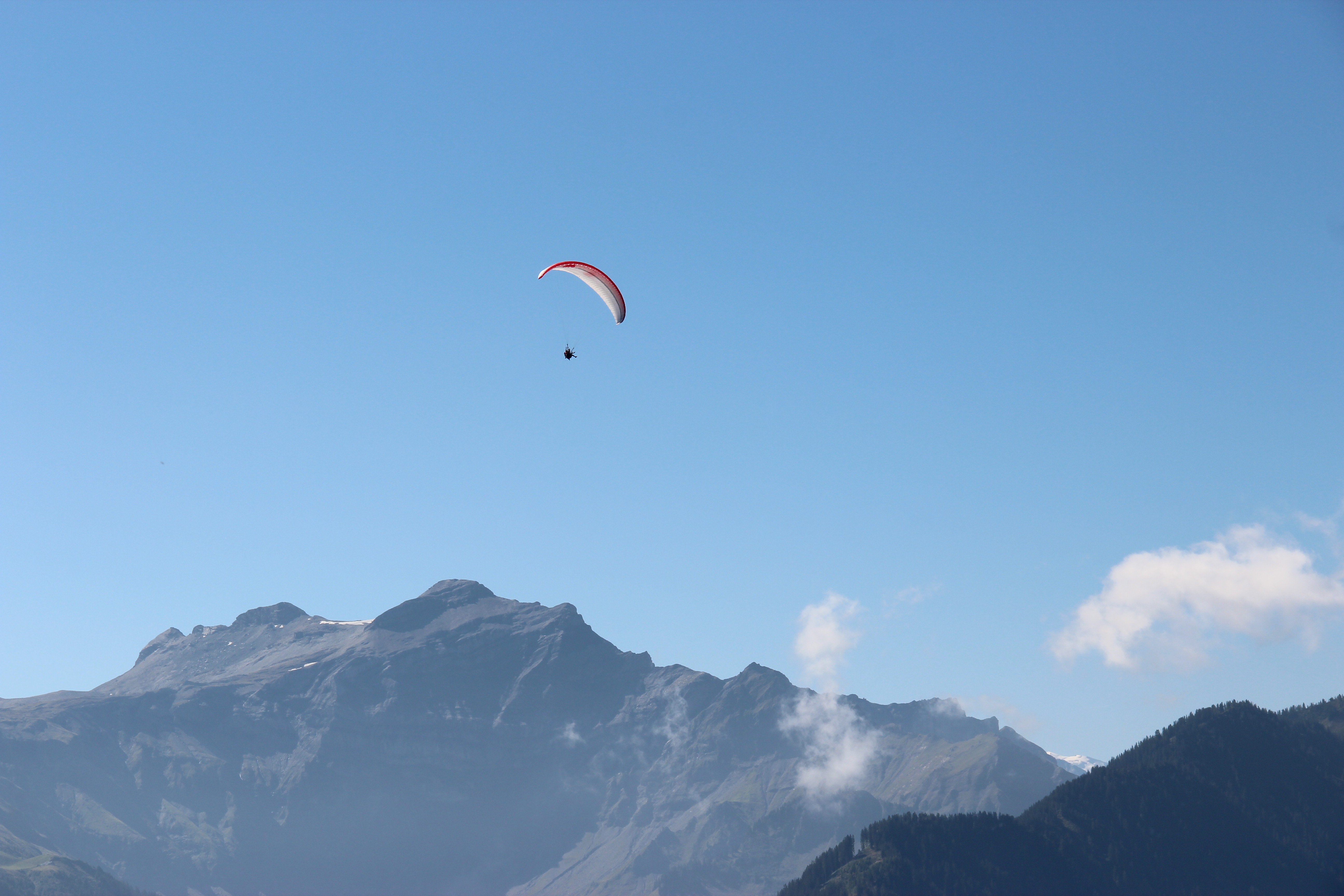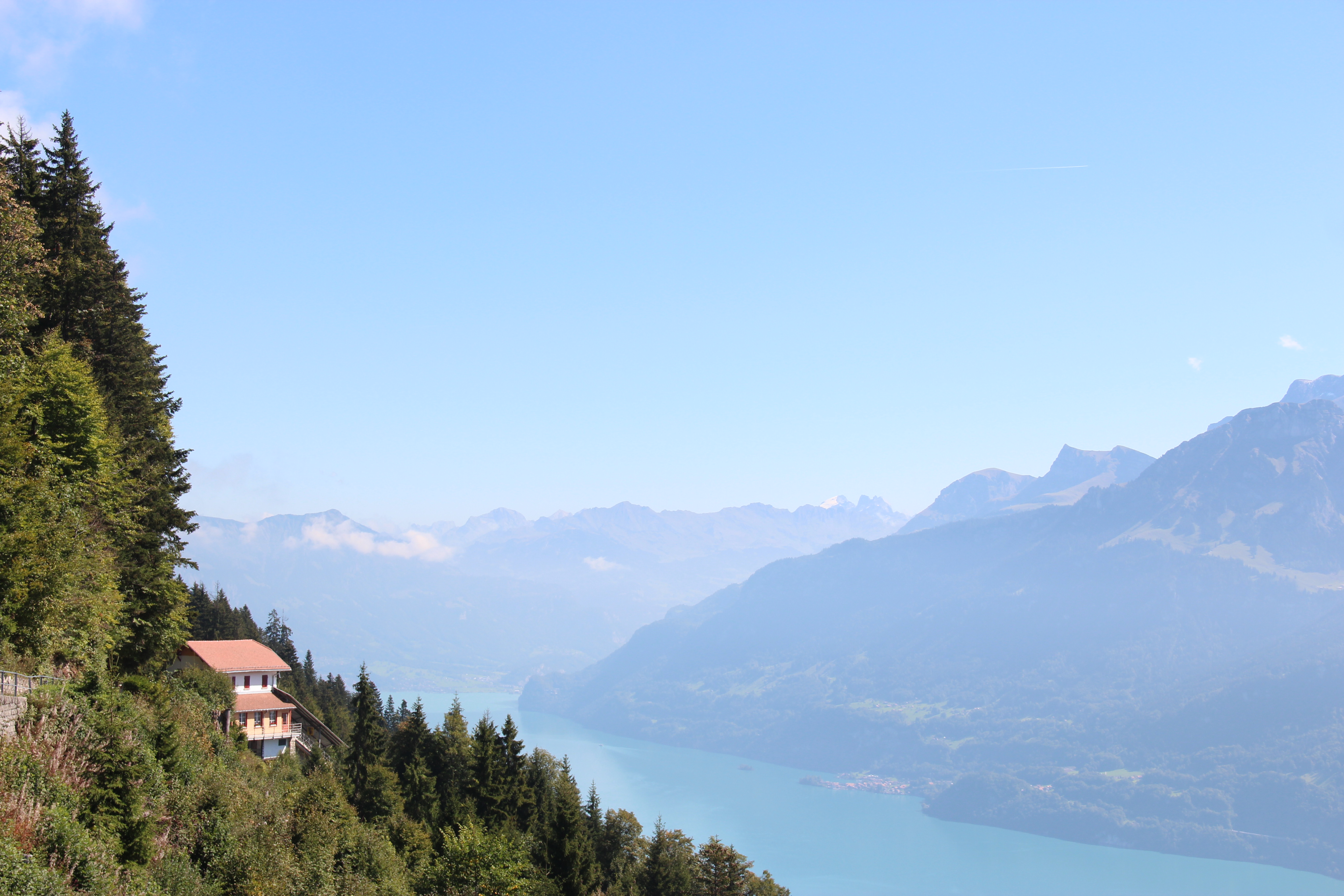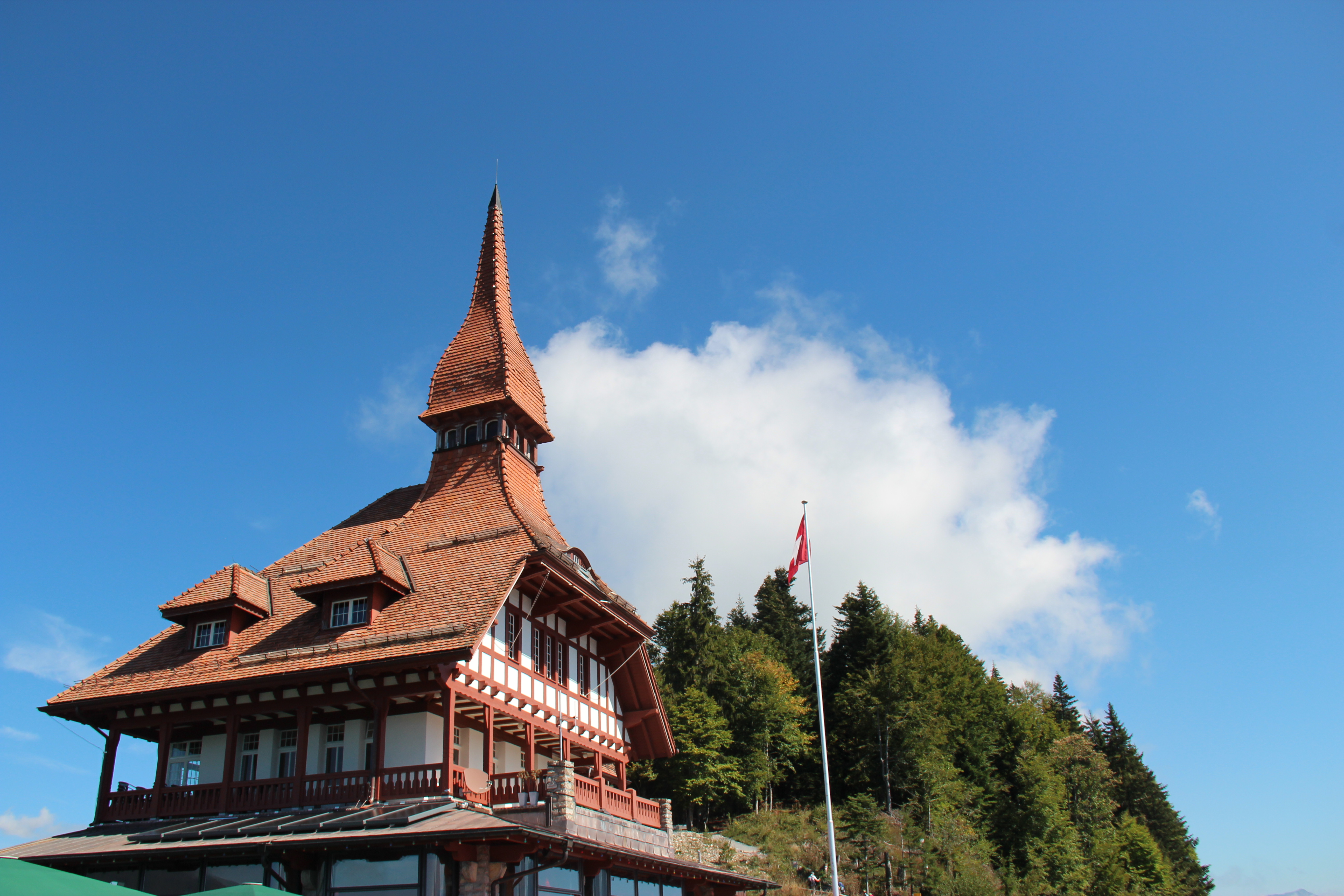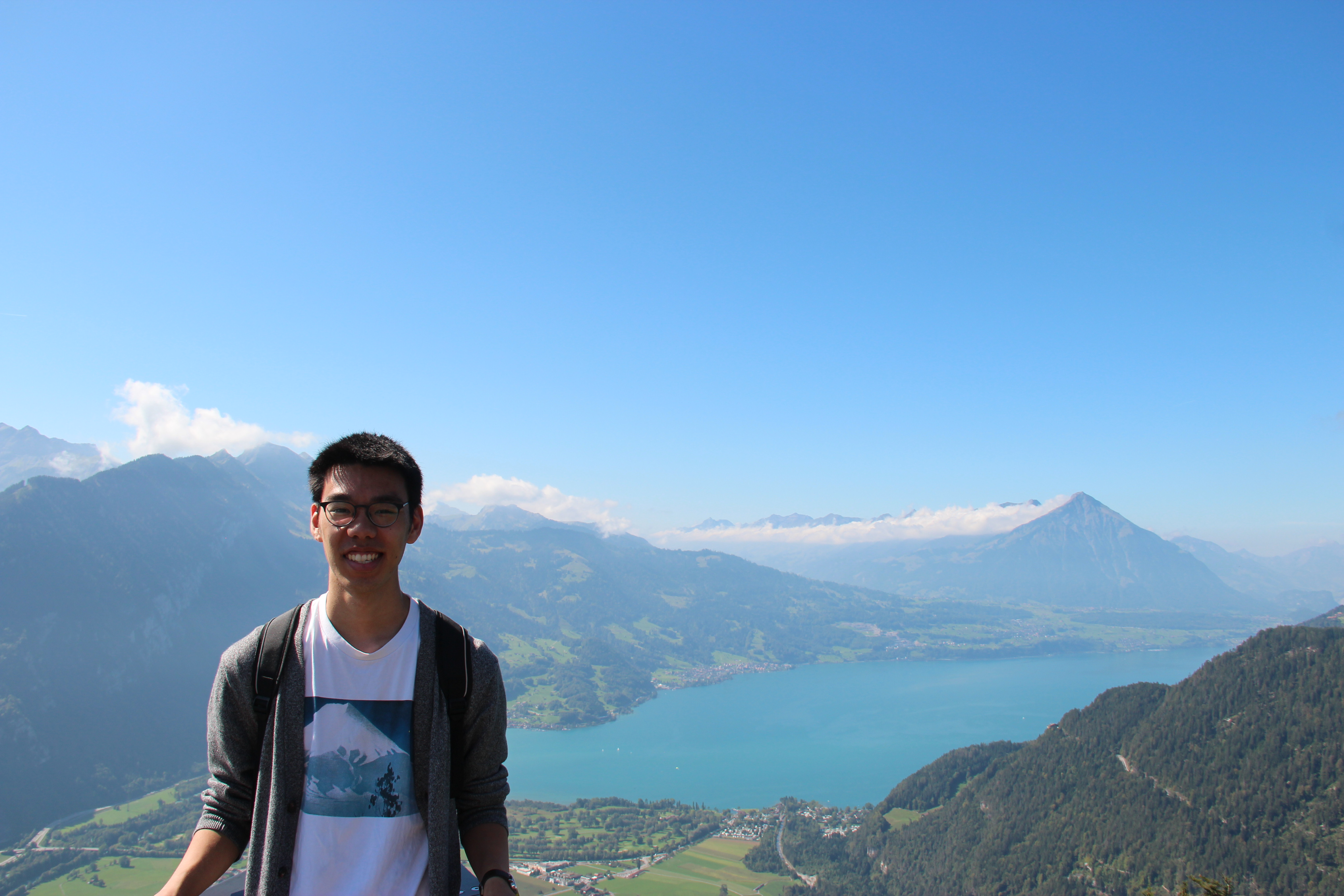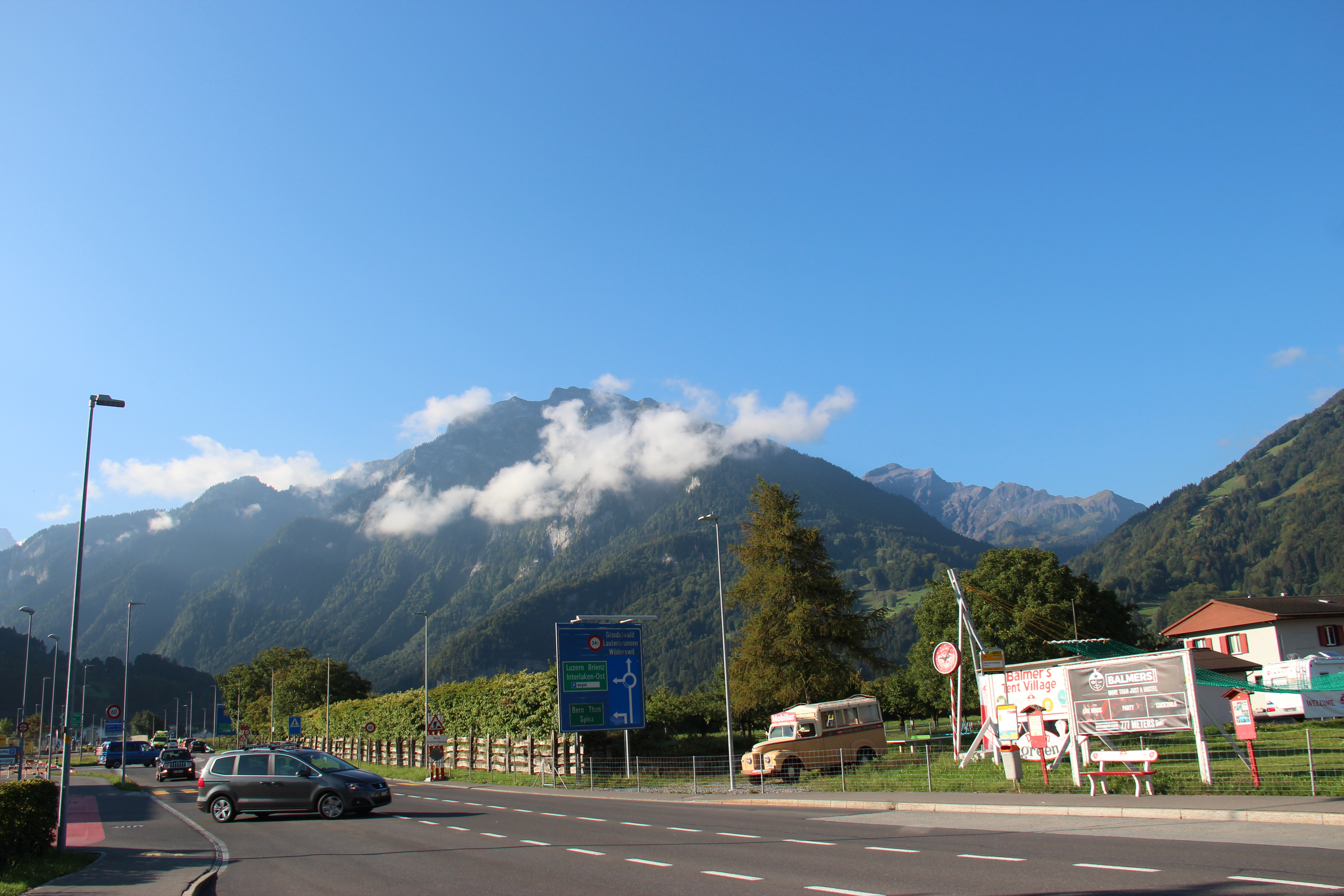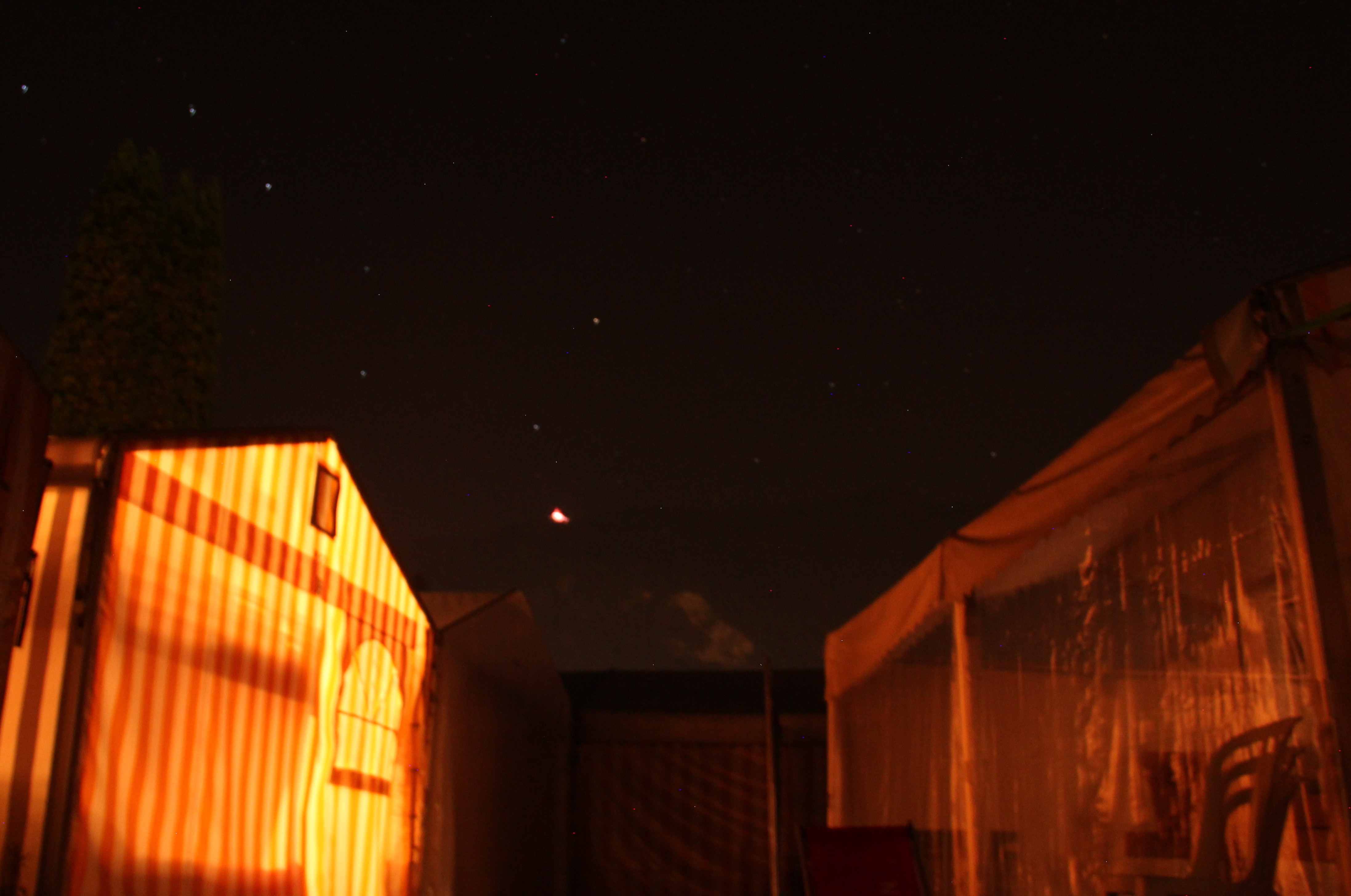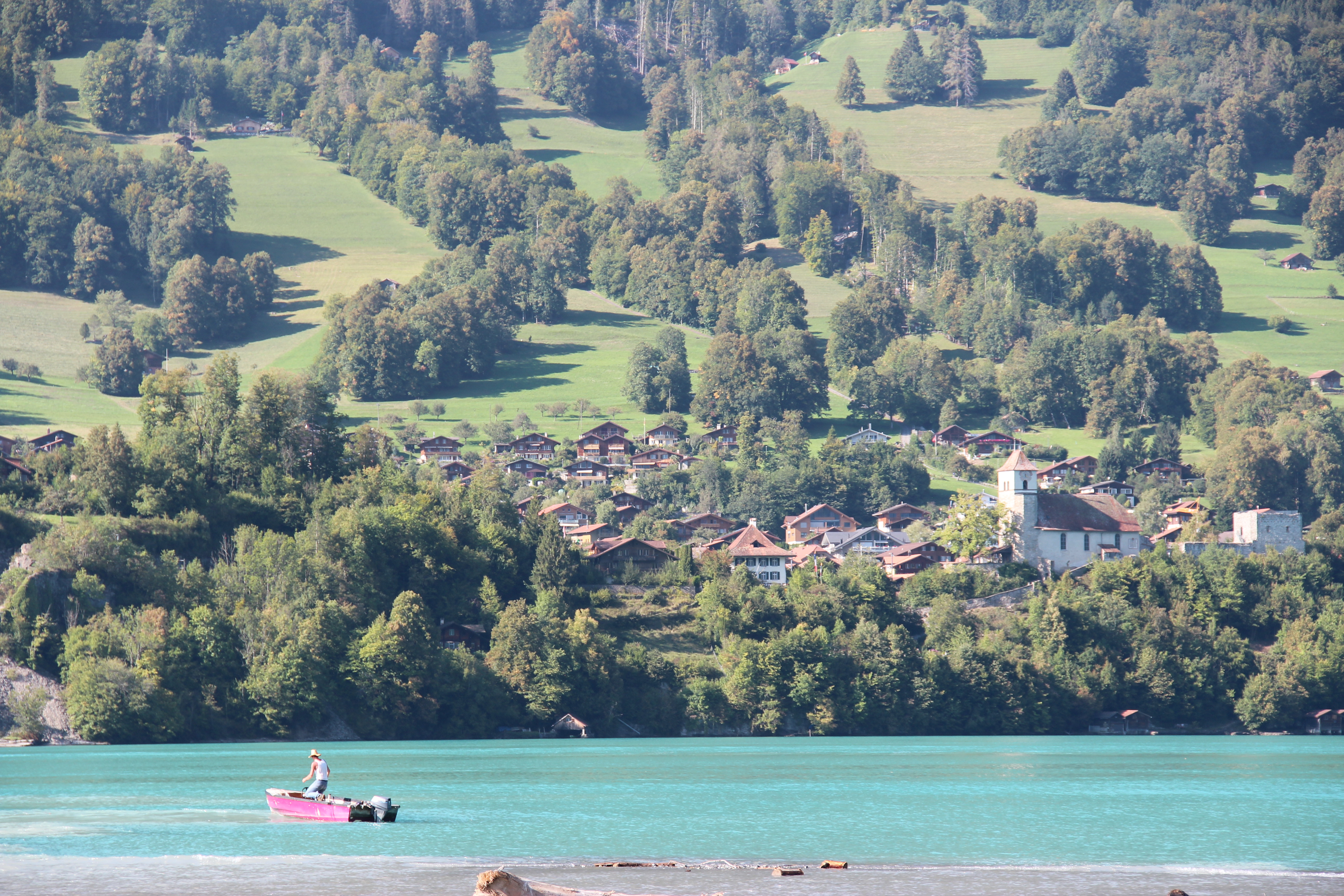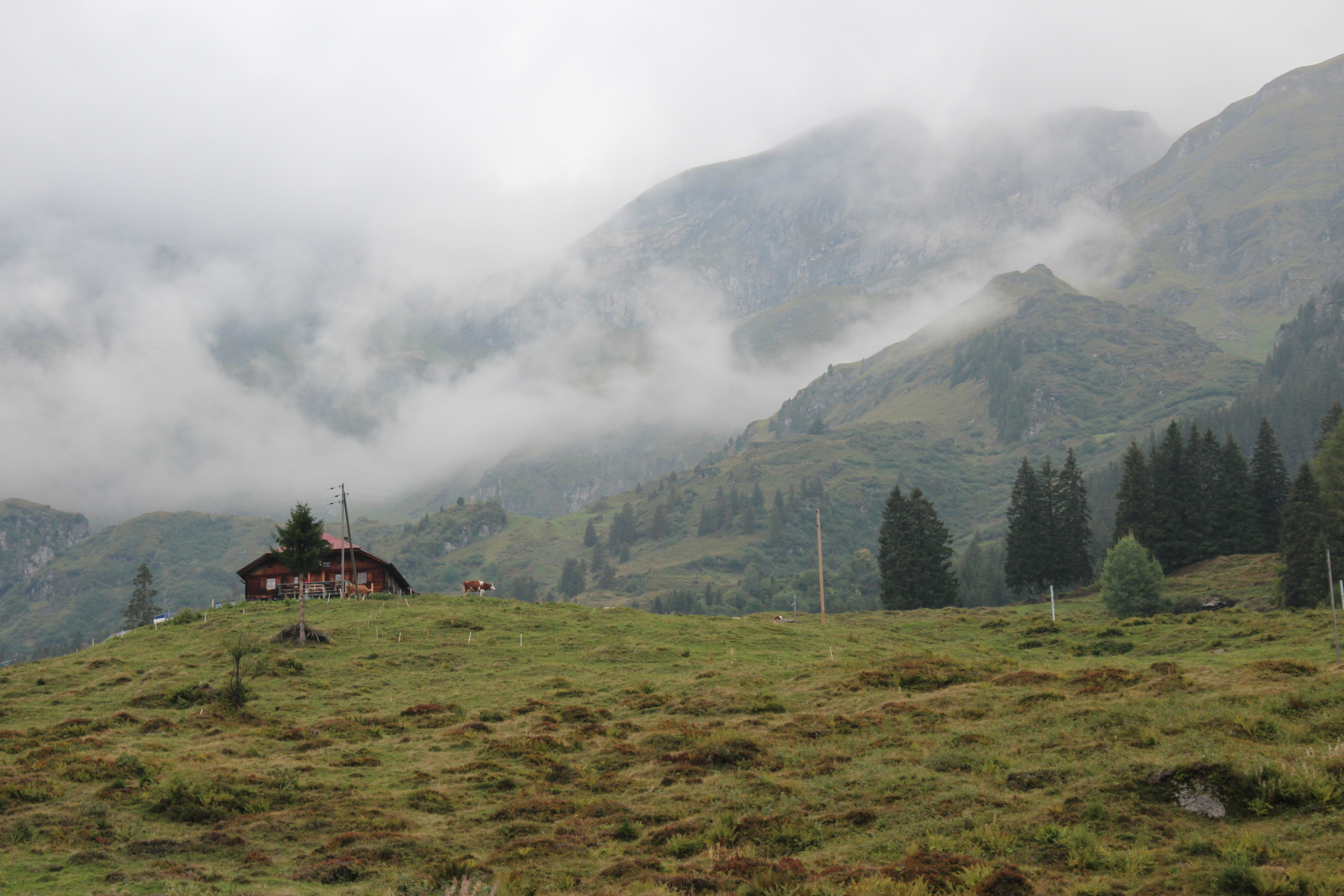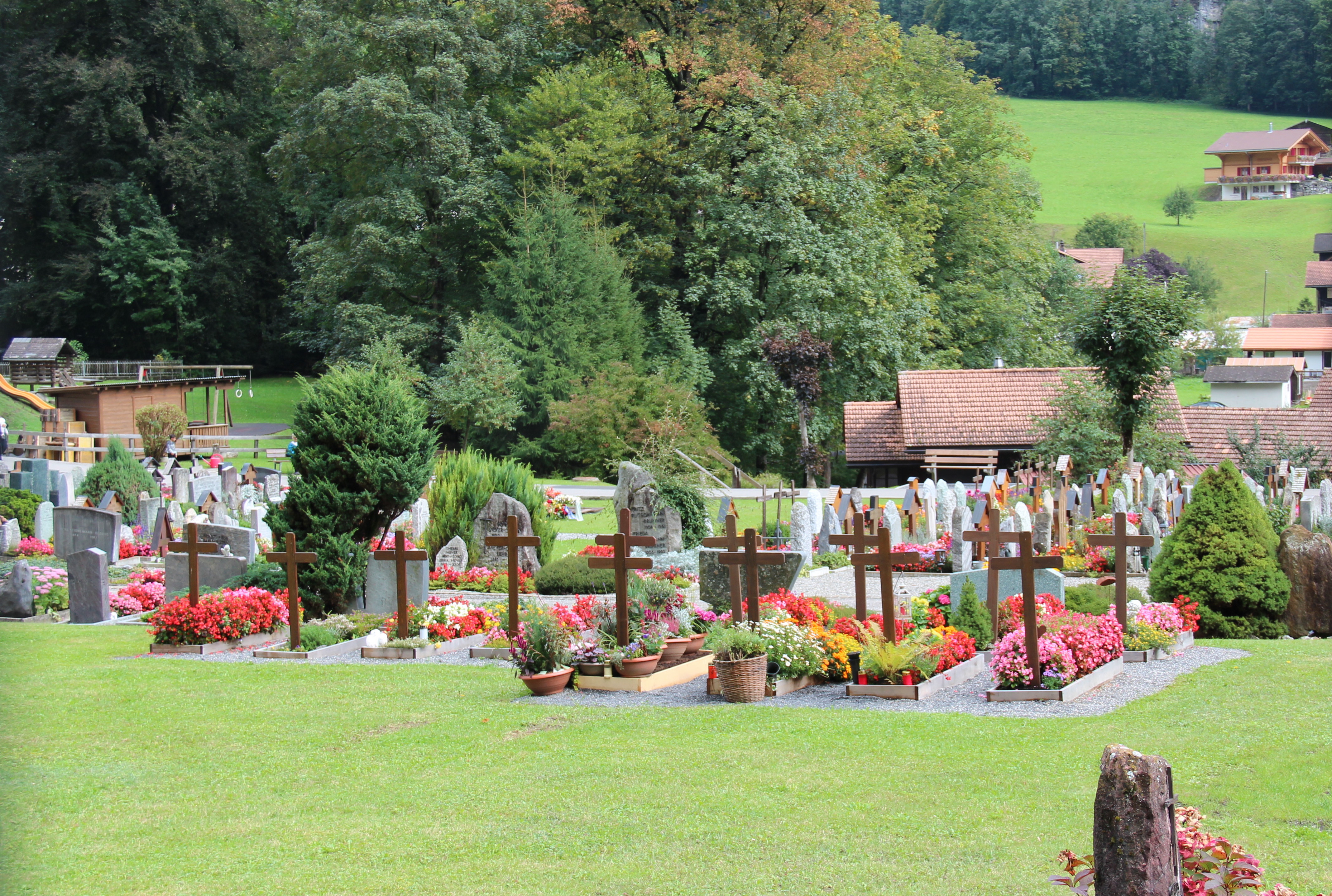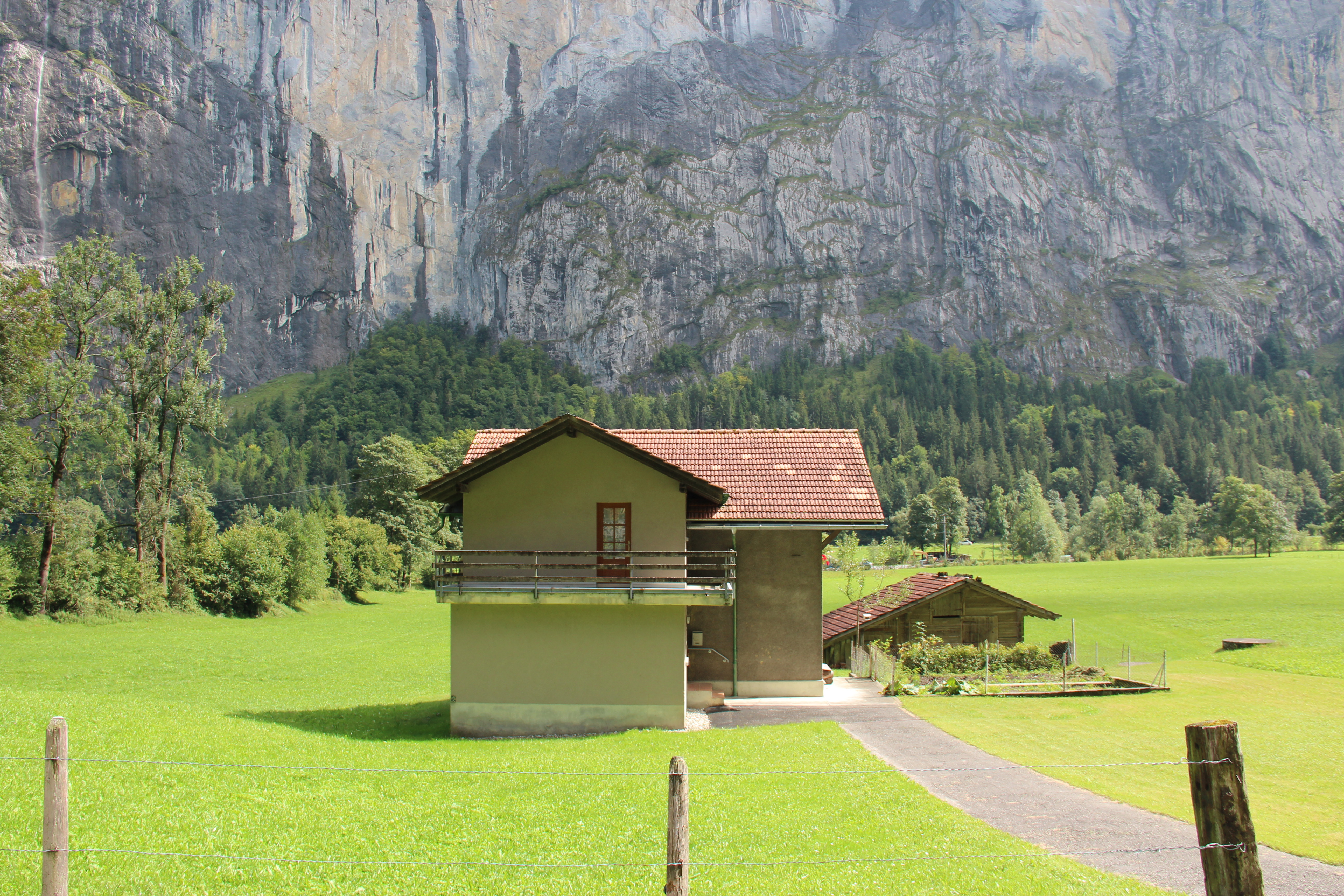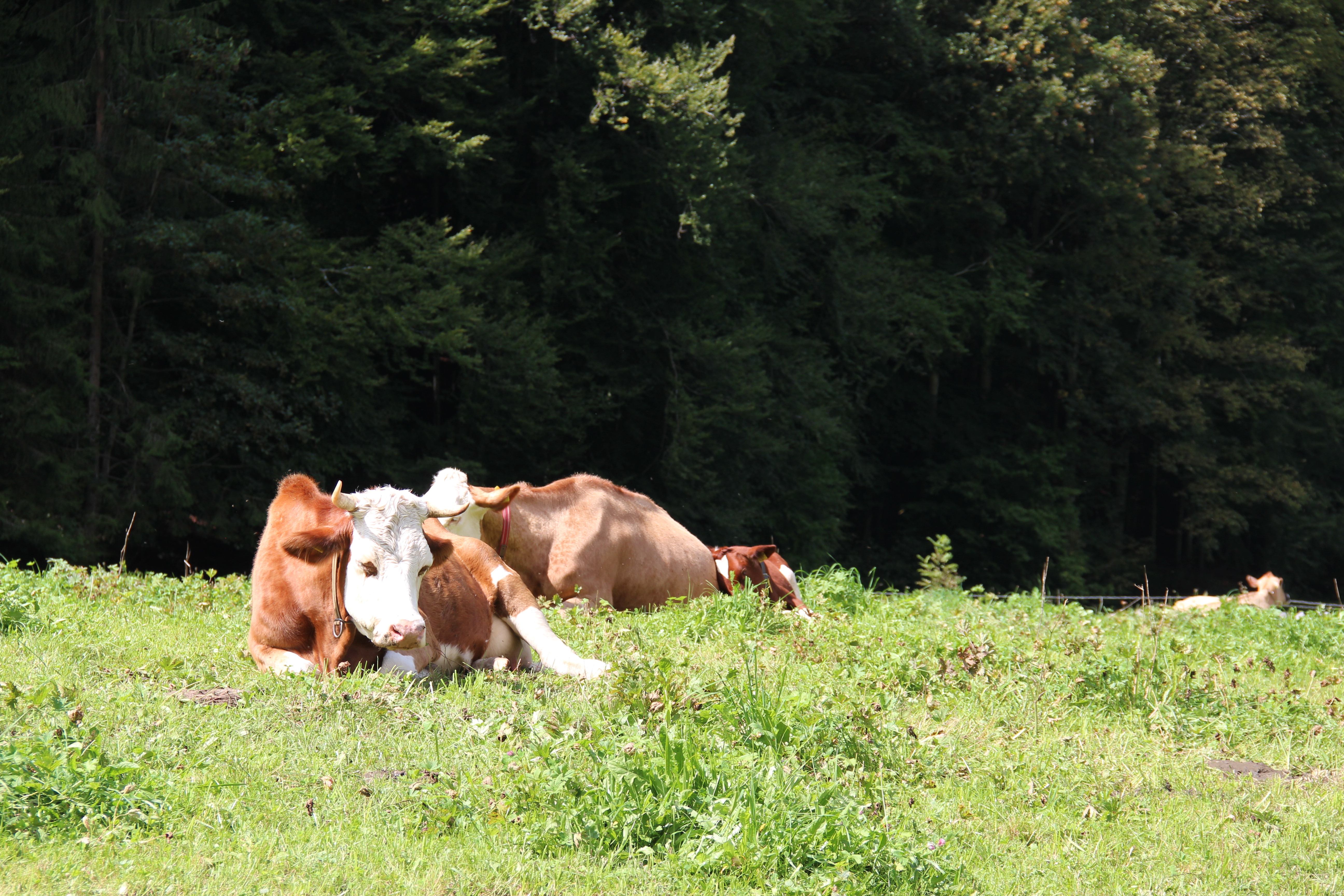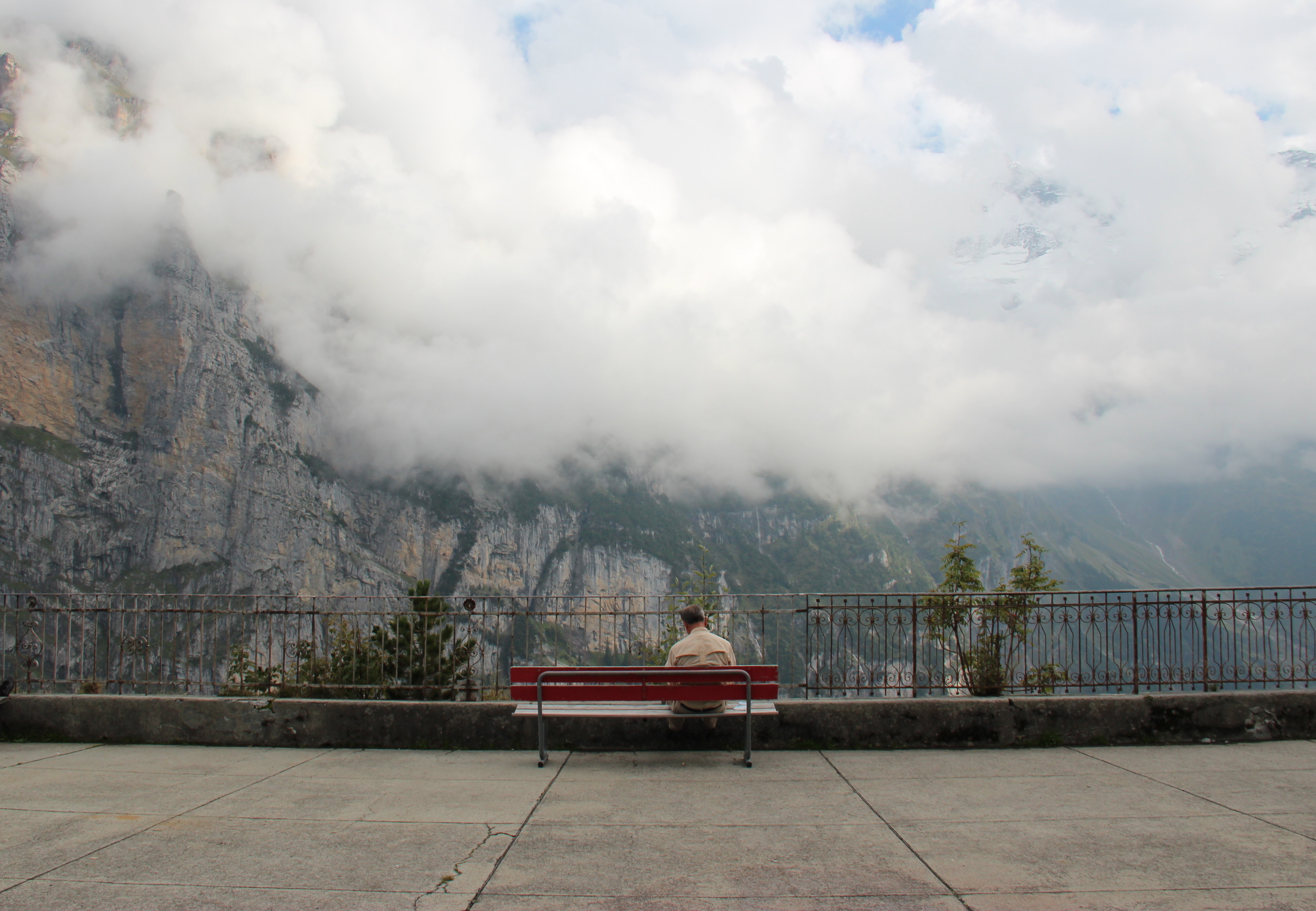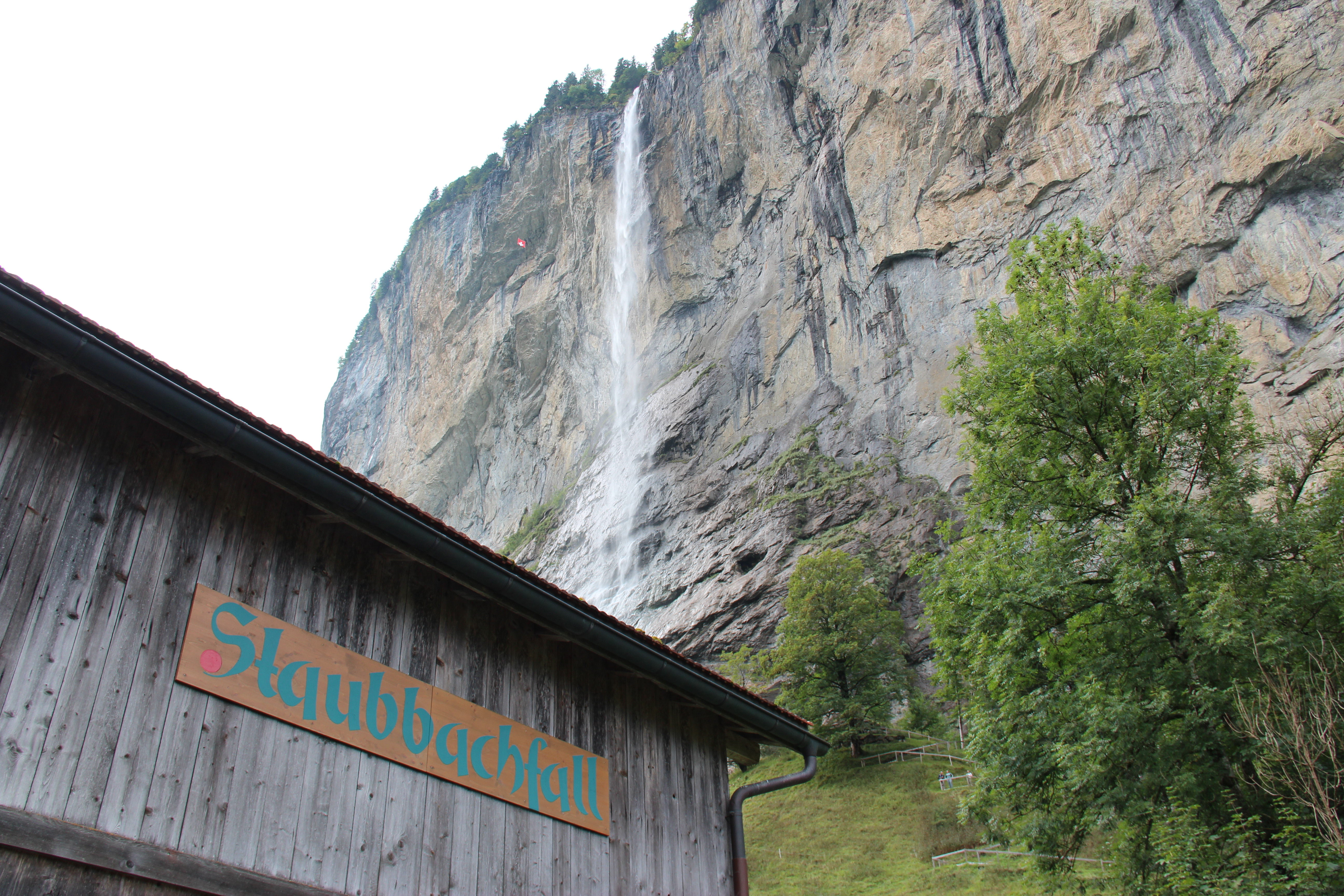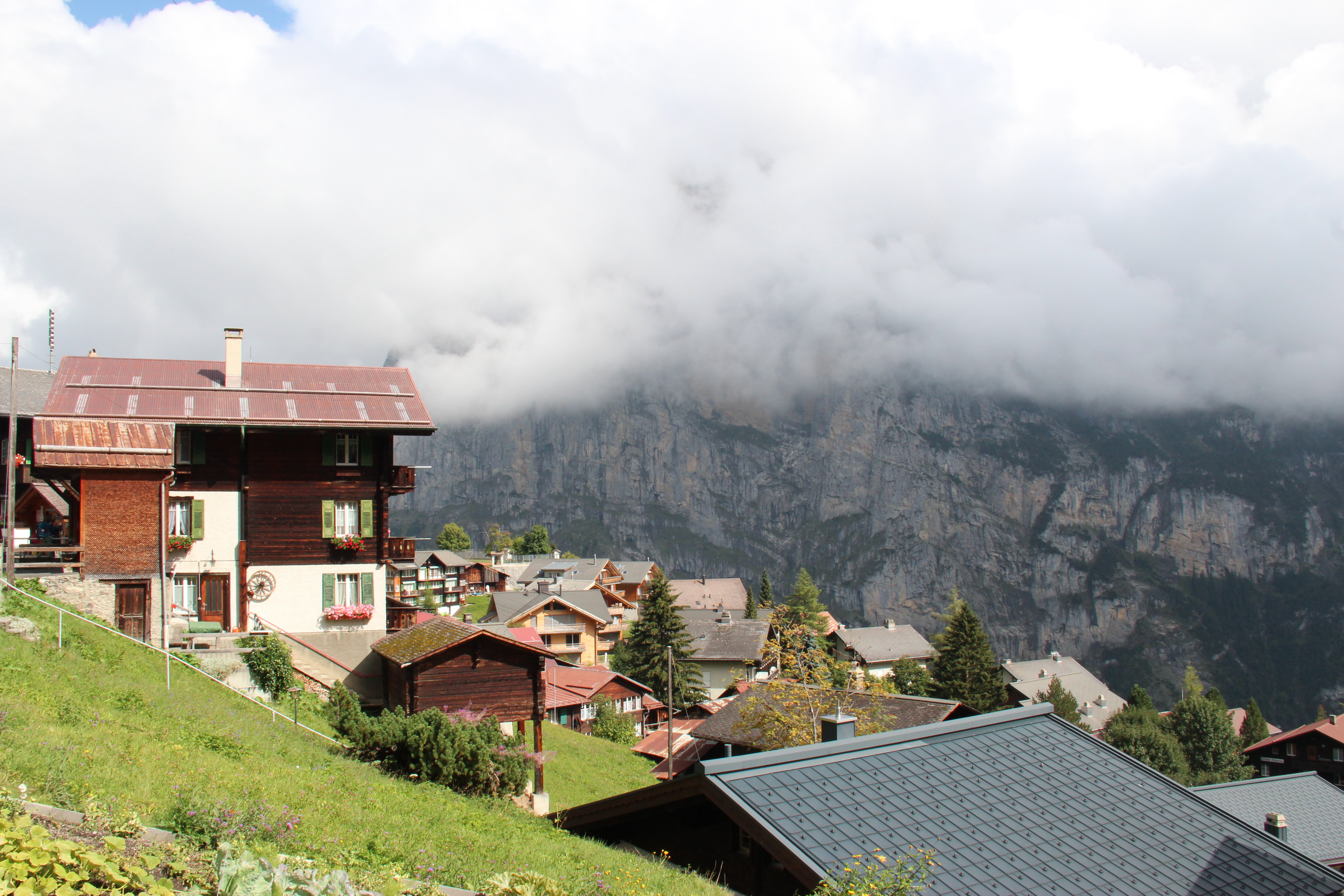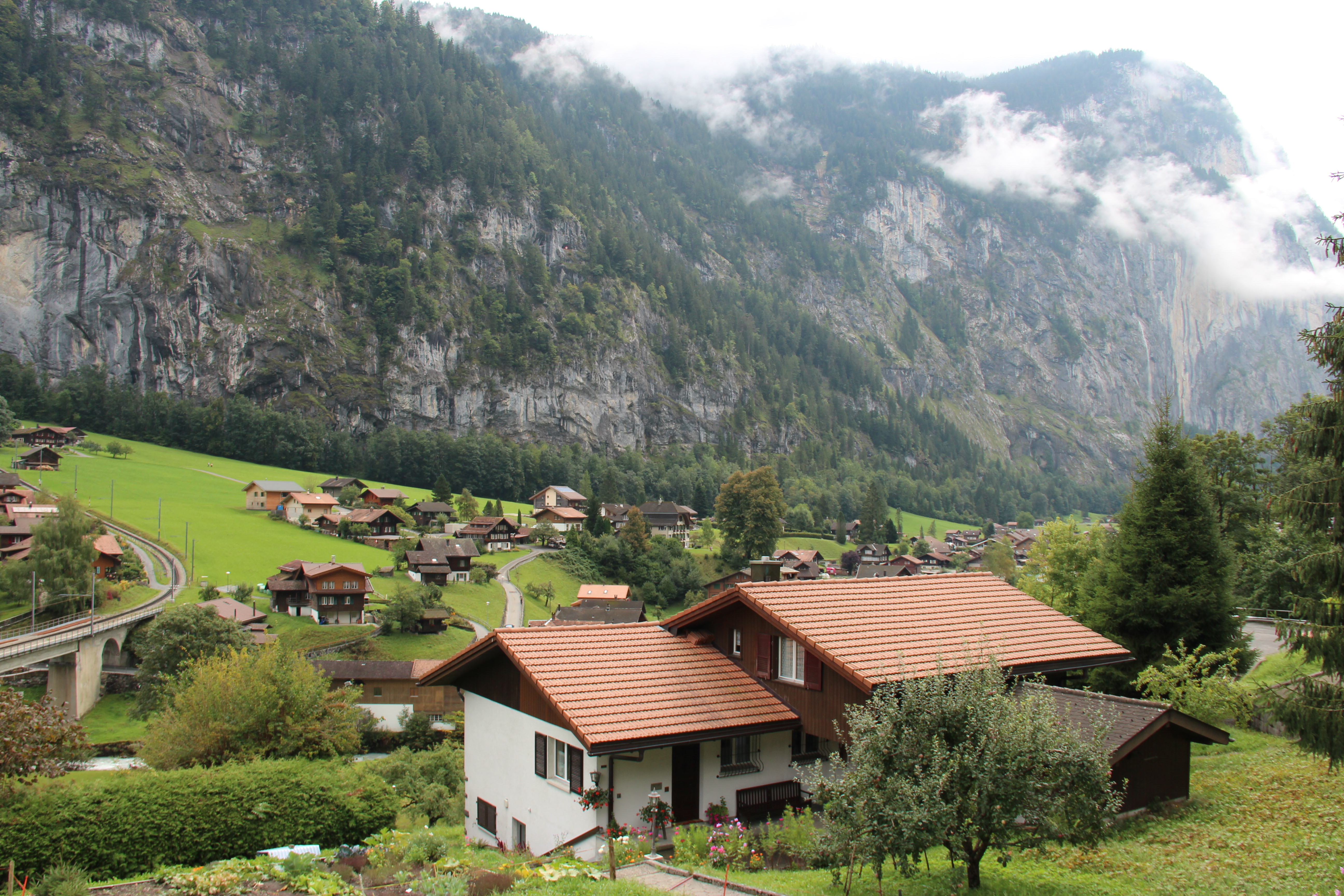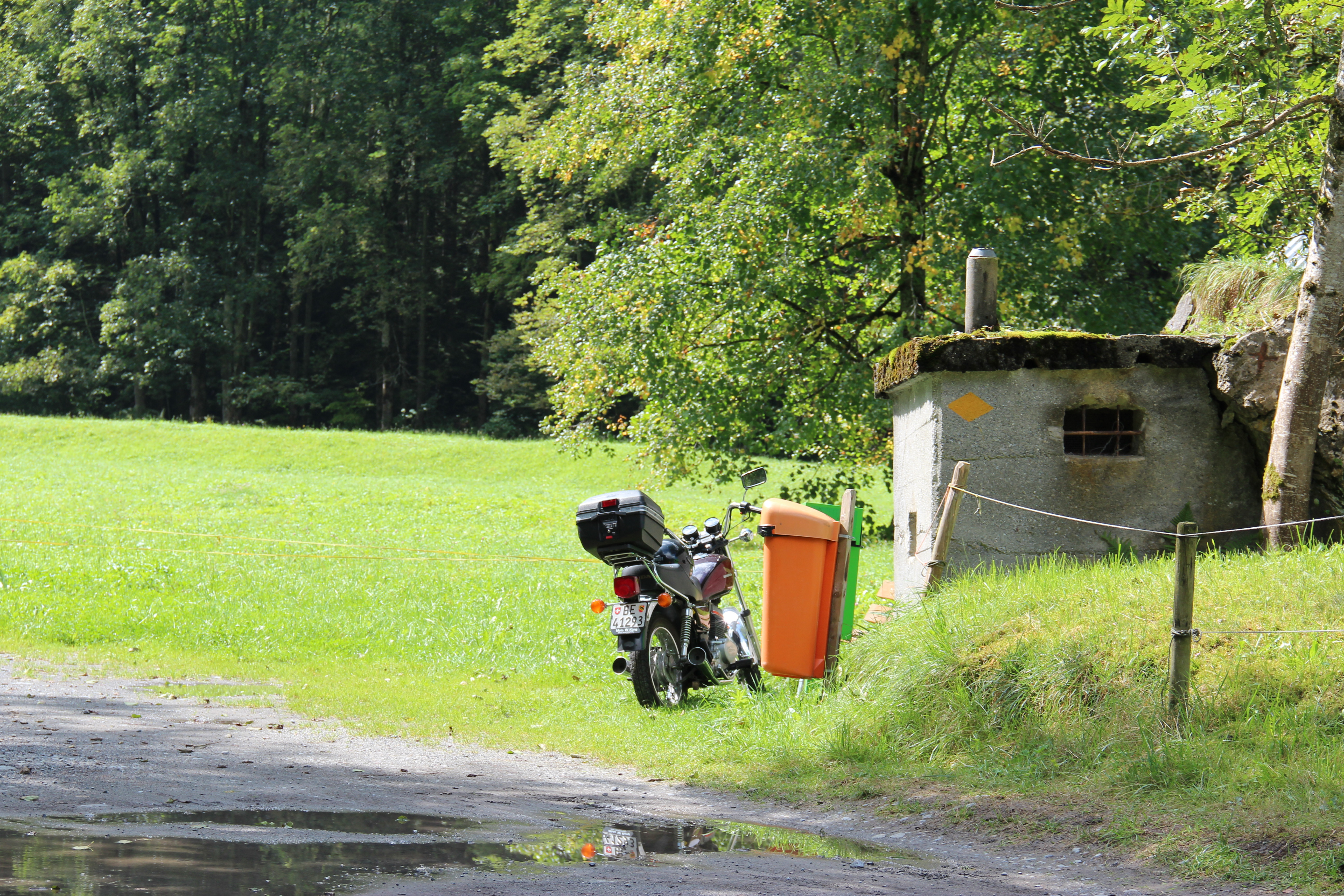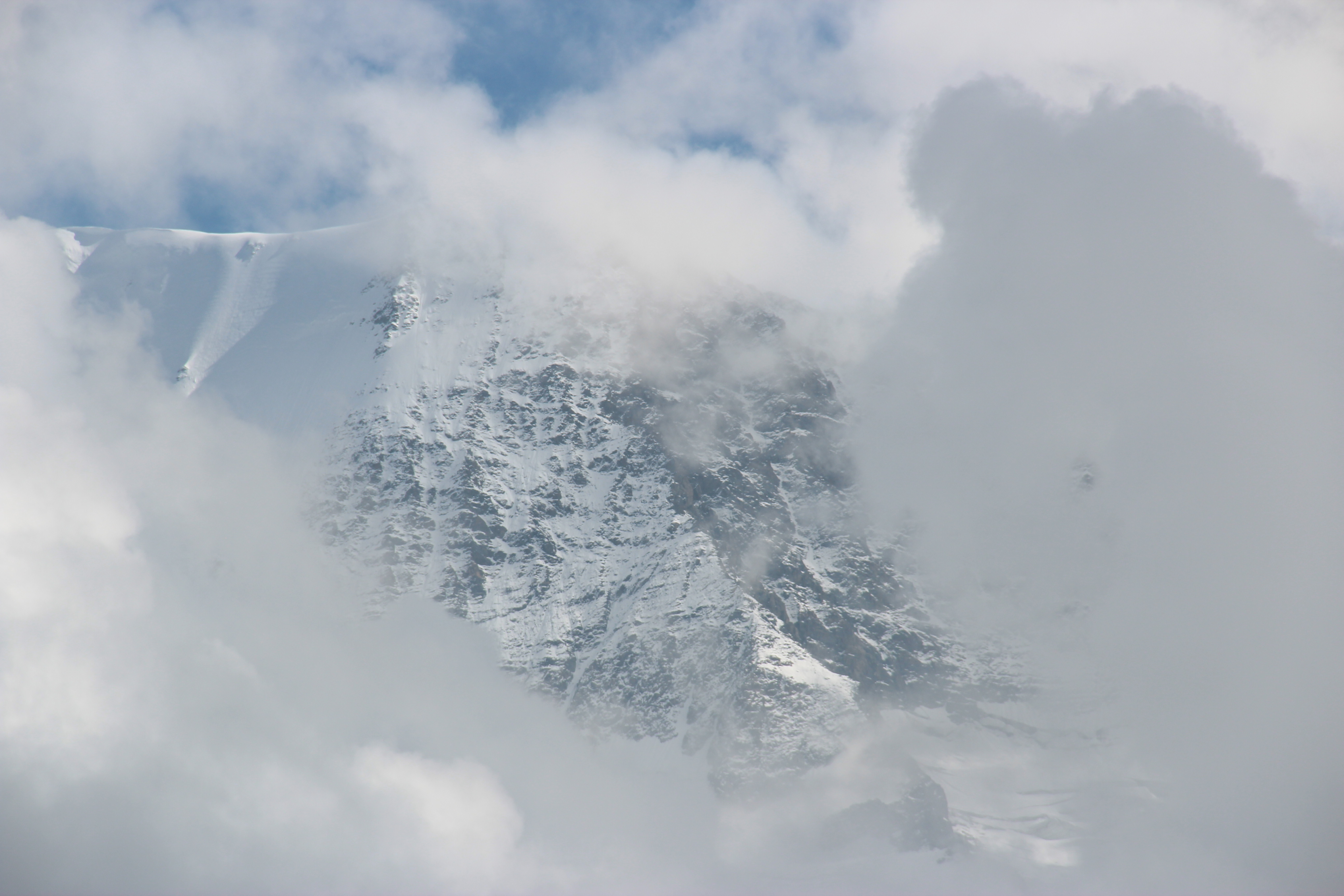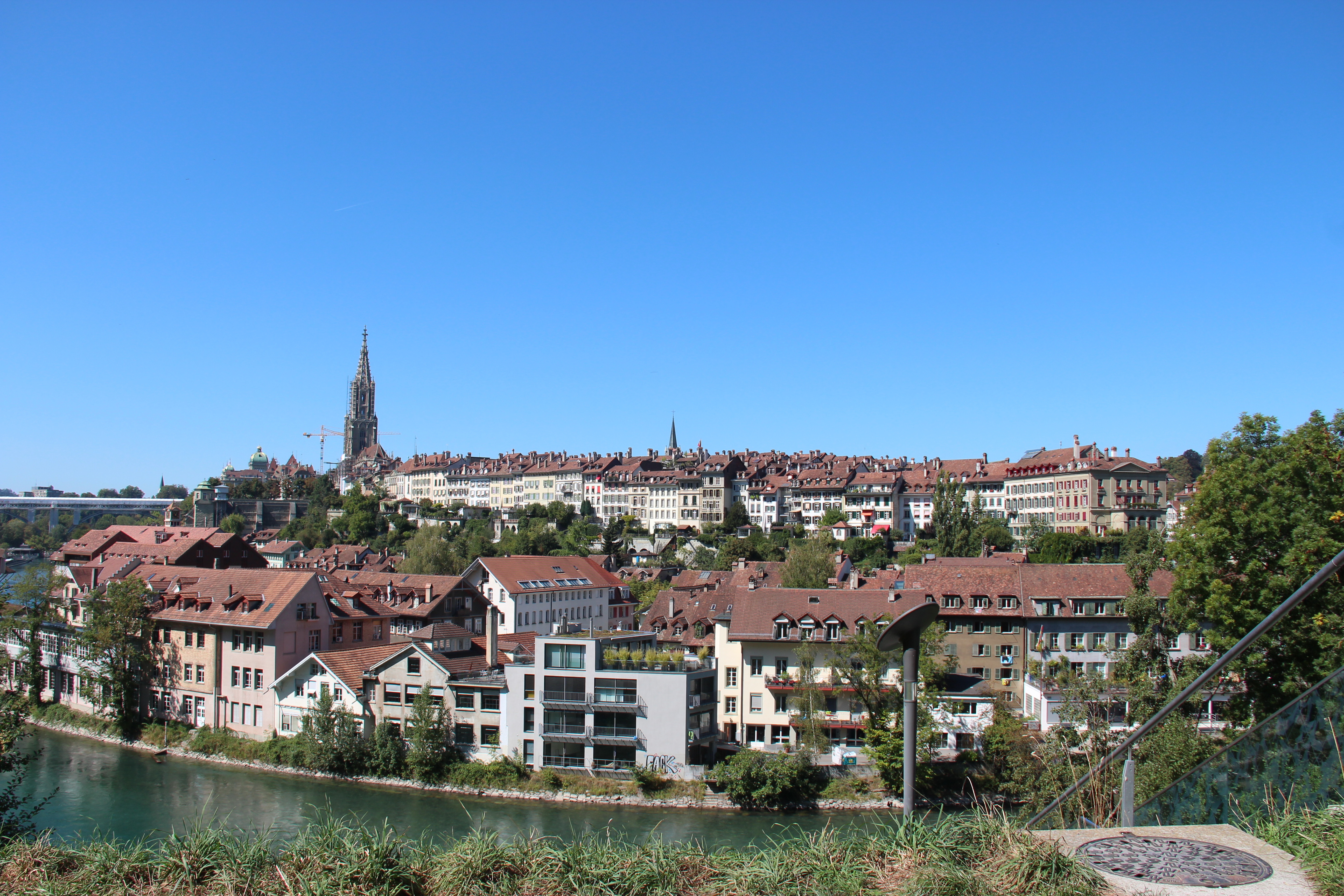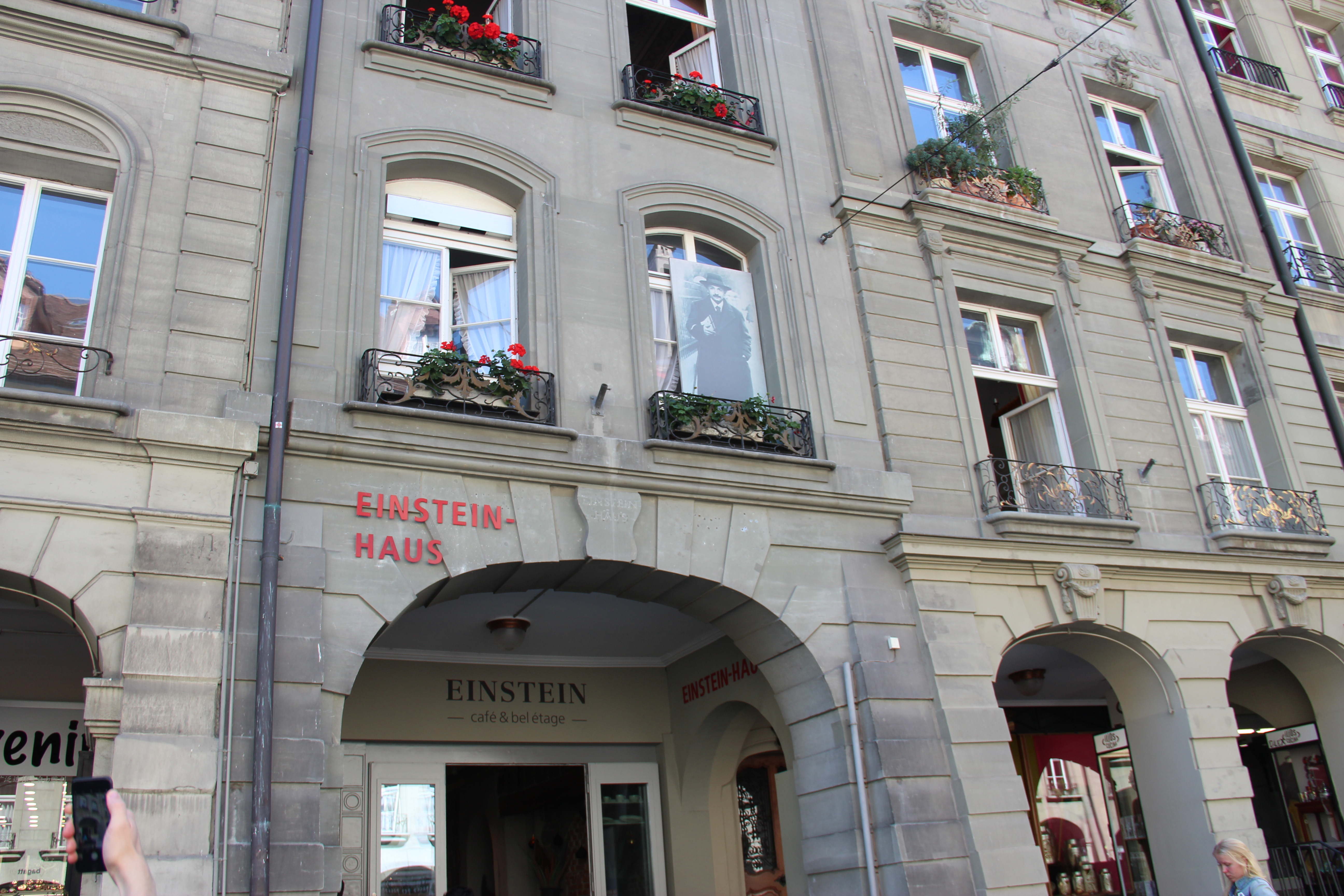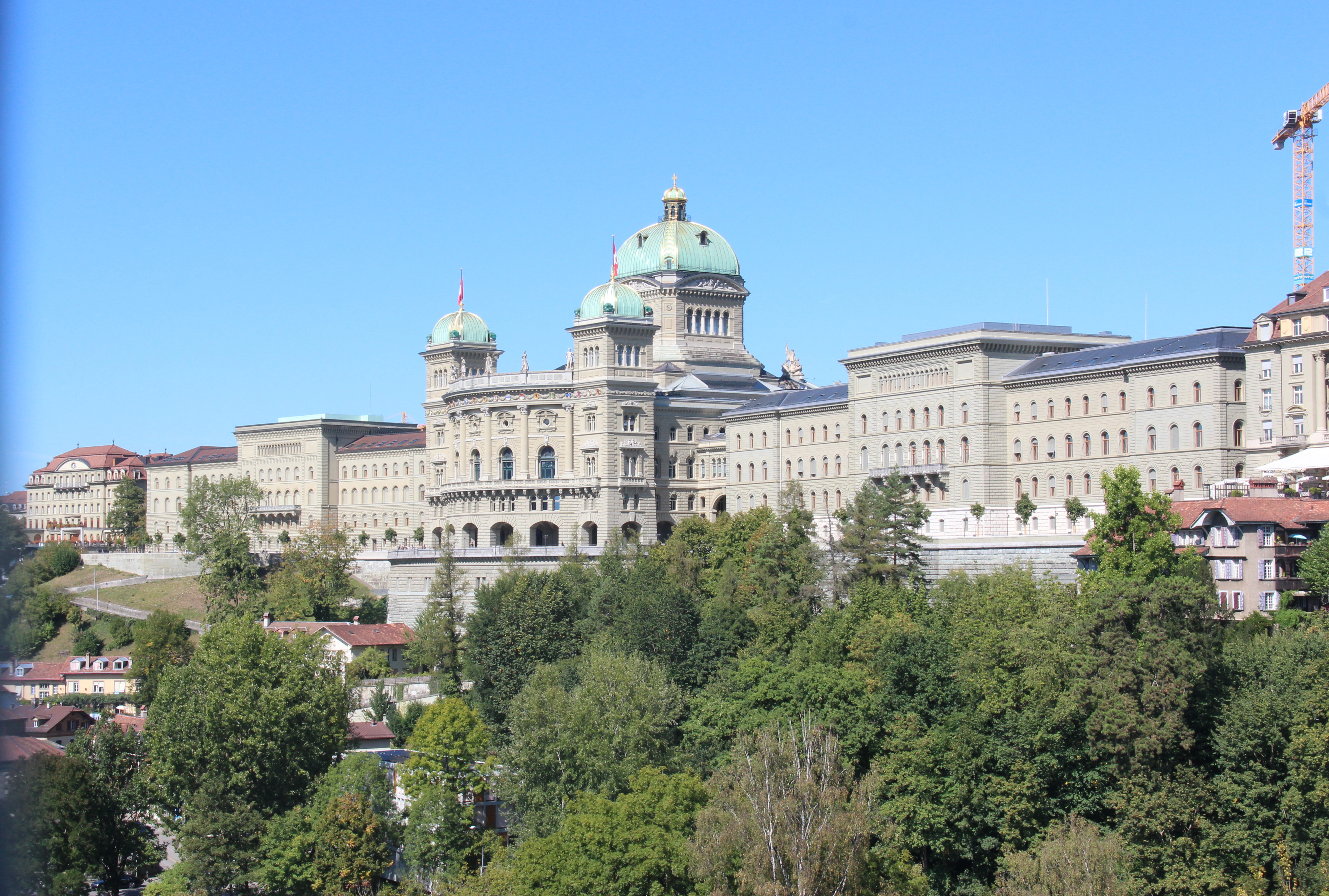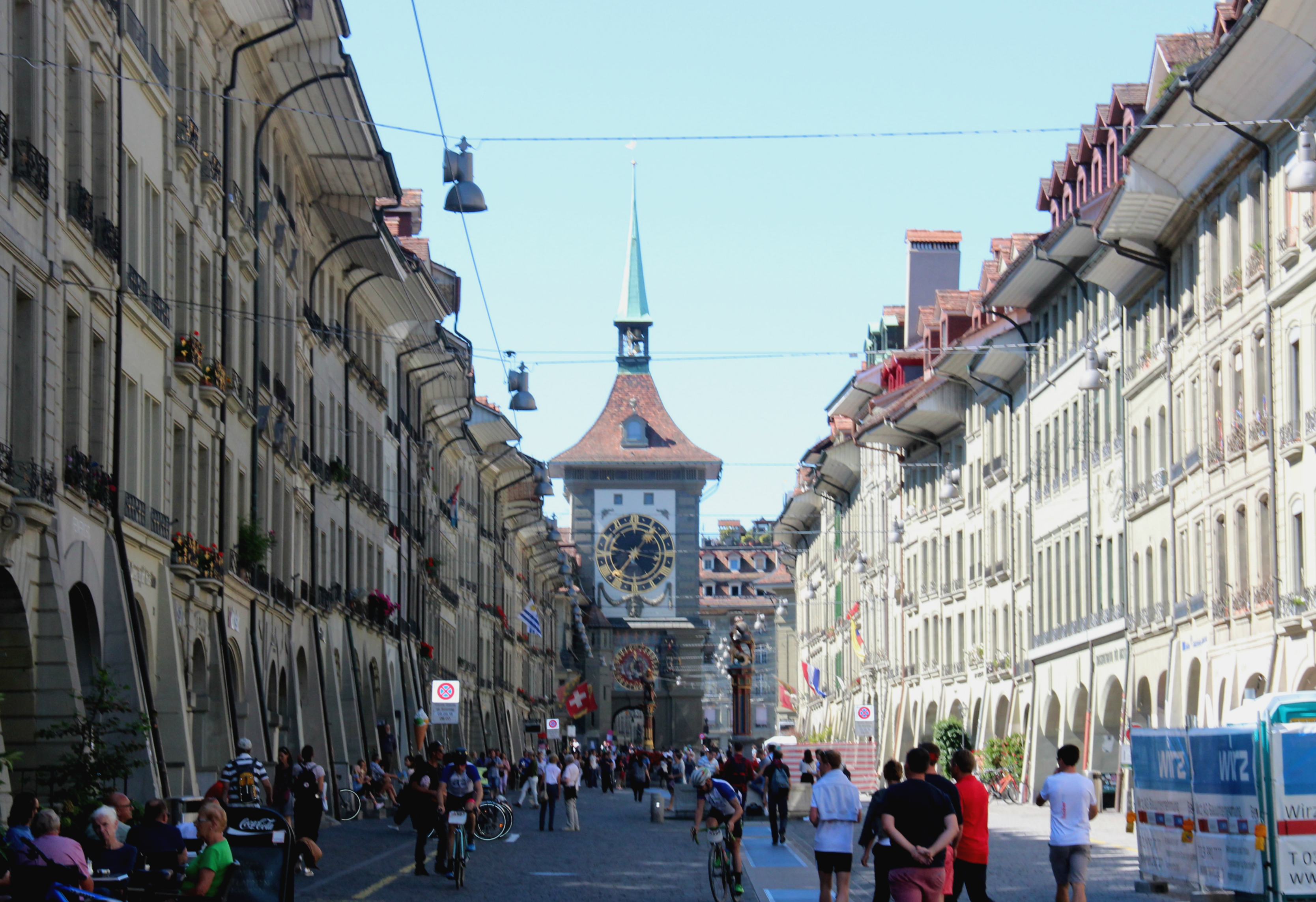The Christmas Market Marathon
This semester abroad I have been traveling through Europe using a Eurail Pass, which has made traveling between countries pretty convenient. I purchased a 3 Month Continuous pass before the semester had begun, and activated it the first weekend of classes, August 24. Thus, the last day on the pass was November 23. Coincidently, this is was when some of the Christmas markets throughout Europe began to open (However, many of the larger markets didn’t open until the following week).
Nevertheless, my friend Will (whose rail pass was also expiring) and I decided to try to visit as many Christmas markets as we could, using our rail passes as much as possible that final day. We ended up visiting three markets in three different countries that day! Our journey took us to Germany, Switzerland, and back to France. Our day started at around 6:00 am, and ended a little after 9:00 pm.
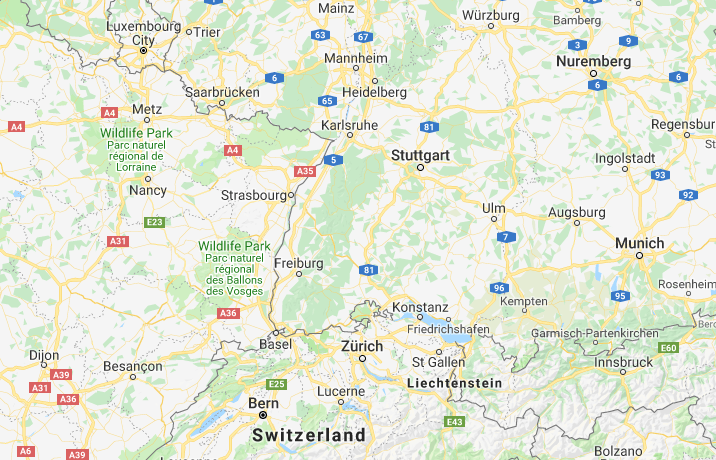
Map of Alsace
The (Thursday) night before our “Christmas market marathon”, was Thanksgiving! Thanksgiving is not celebrated in France, or Europe for that matter, which was a bummer. However, the Christmas market downtown was open that night, so we decided to go explore it. It was a great chance to visit our first Christmas market without traveling far outside of Metz.
There are two main markets, one by Republique and the other right outside the Metz Cathedral. The one by the cathedral houses a large ferris wheel that looks beautiful at night. Both were charming, and a great place to get a snack and a drink. They had an interesting variety of foods, everything from crepes to fish and chips. I ended up getting what was a baked potato with Bolognese sauce on top. I also got to try Vin Chaud, or mulled wine (hot wine infused with spices), a staple of all Christmas markets. The taste was verying jarring at first; it has a very intense flavor, which is not too surpising as the flavors are concentrated when the alcohol and water evaporate, but I soon got accustomed to it. A hot cup of vin chaud will really warm you up on a cold evening. Not so bad for a Thanksgiving if you ask me (Although I did miss being with my family back home).
Freiburg (im Breisgau) is a German city located half-way between Strasbourg and Basel, along the Rhine river. We didn’t know too much about the city before going, other than that the city was dubbed “The sunniest place in Germany,” according to meteorological surveys. We decided to go because it was relatively close by train and was one of the few German markets that were open at the time.
After a short walk from the train station to the city centre, we arrived at our first destination around 10am. The center of the Weihnachtsmarkt was located in the Rathausplatz, where we were greeted with a lovely Christmas market that was bustling with activity, yet did not feel crowded at all. Also, depending on where you are in Germany, the Christmas markets are referred to as Weihnachtsmarkt or variations of Christkindlmarkt.
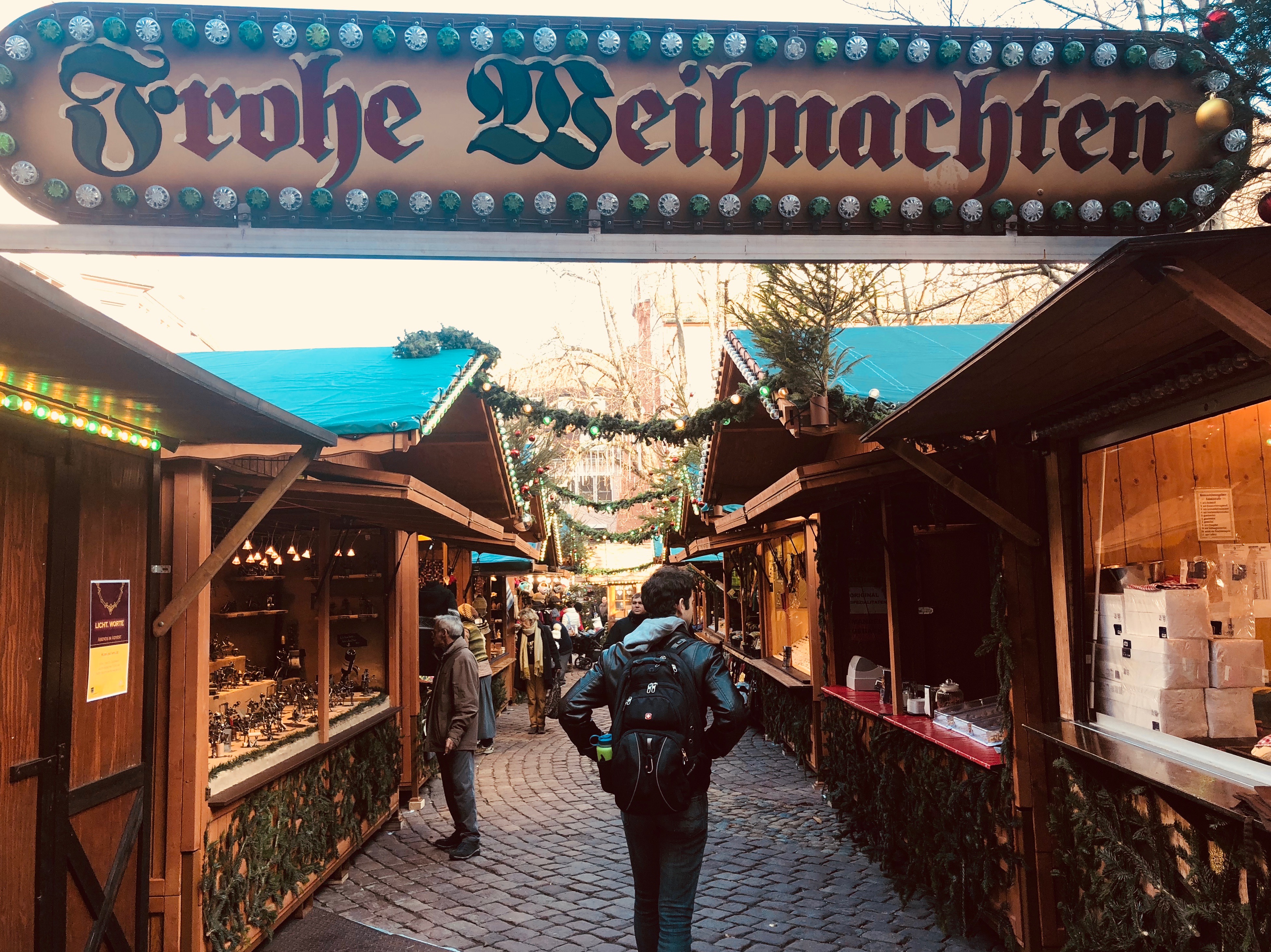
Freiburger Weihnachtmarkt
The Freiburger Weihnachtsmarkt sold everything from figurines and candles to ornaments and tea. We found this cool place that sold schokoladenwerkzeug, (literal translation: chocolate tool). We were fooled at first, the tools looked so realistic and were coated perfectly to mimic real metal. There were so many things to eat, but we limited ourselves to just three things. First, we had another glass of mulled wine, which is known as Glühwein in German.
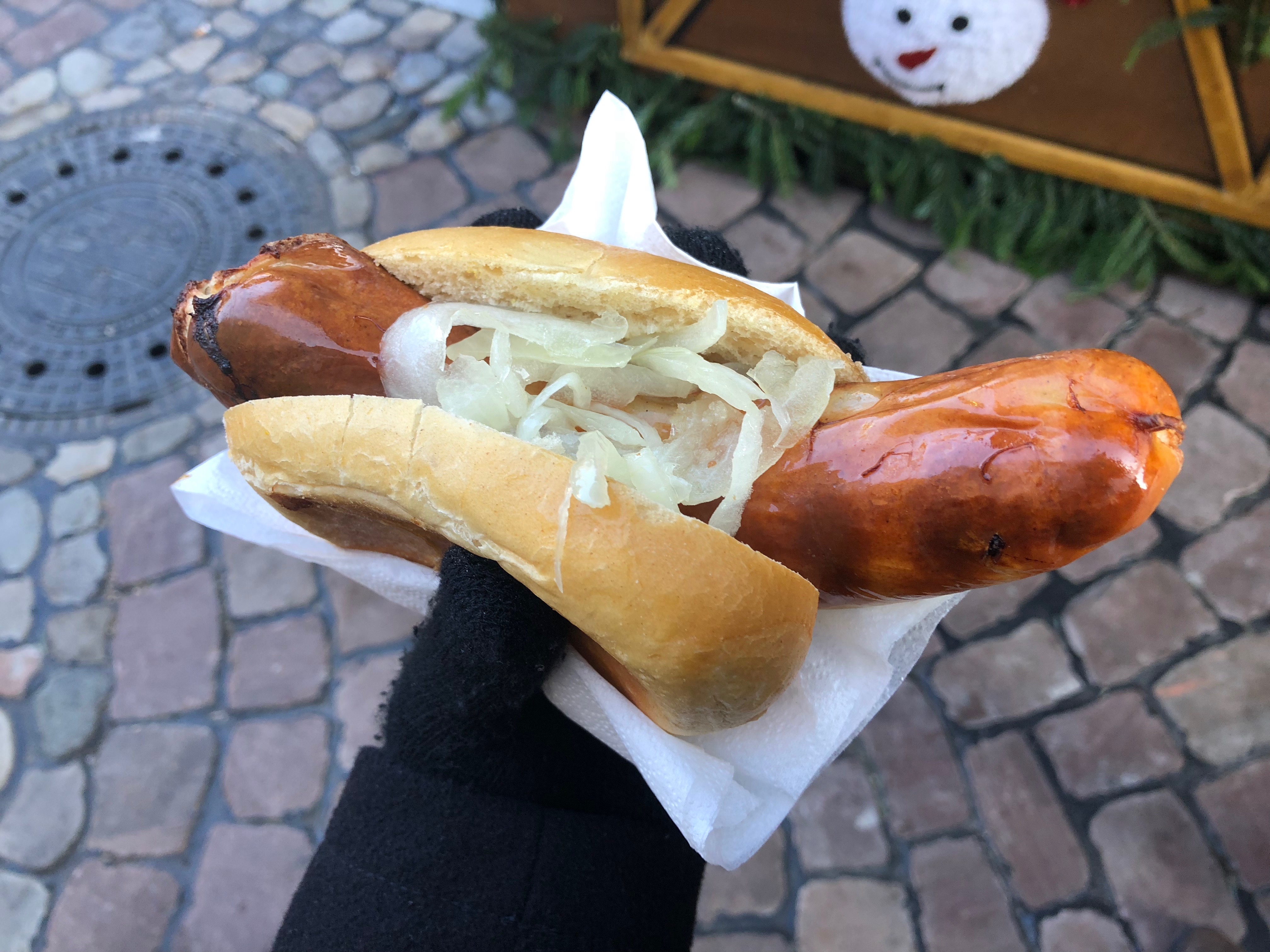
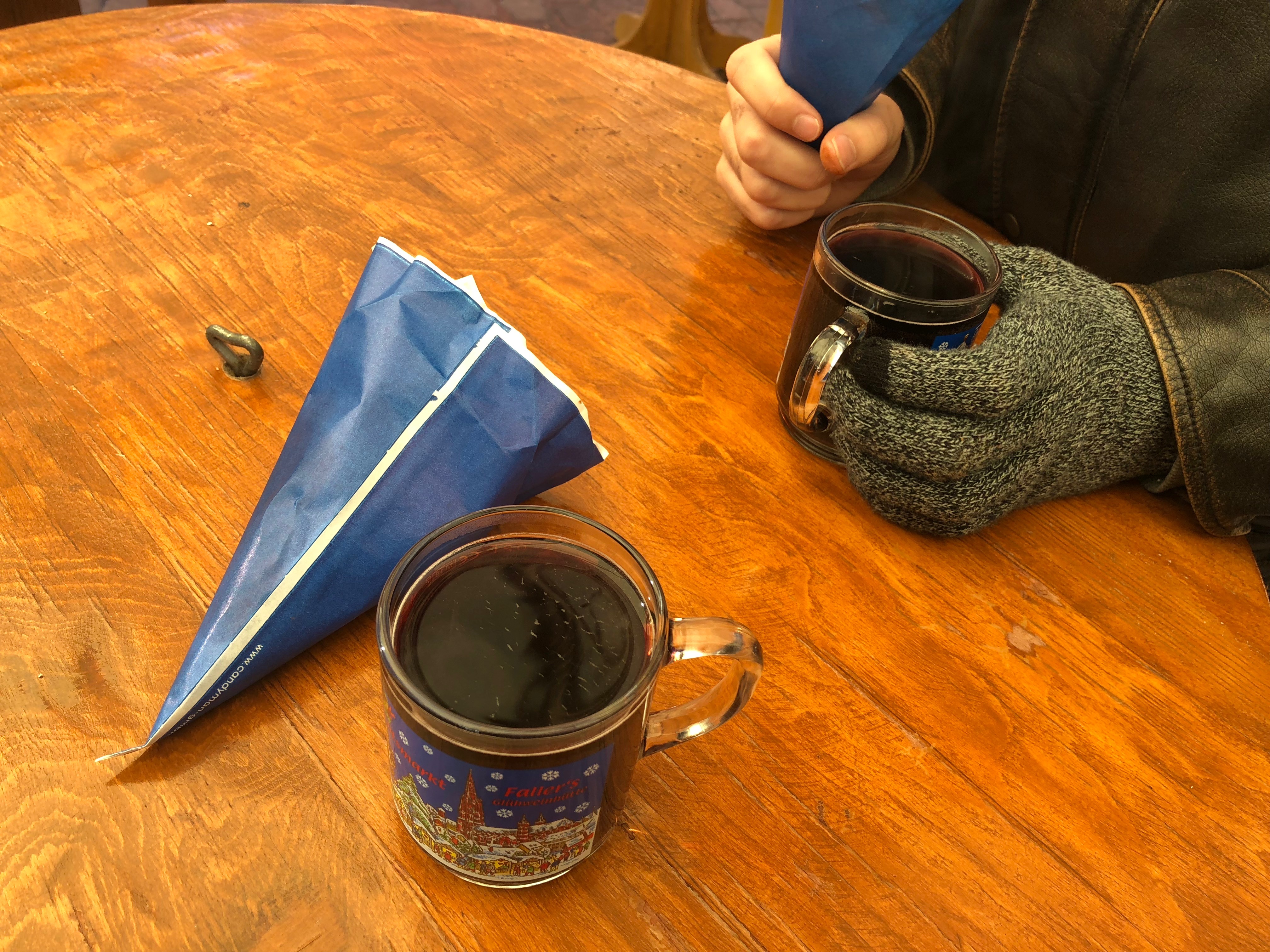
Wurst with bread and onions (left), Gluhwein (right)
Side note: When ordering Glühwein, places will require you to put an extra 1-3 Euros deposit for the mug/cup it is served in. If you return it, you get your deposit back, but I just ended up keeping the mugs and began collecting them.
Second, we also had a nice and hot German wurst, served on bread topped with onions. I forgot what the specific type of sausage it was, but it was delicious. Finally, we got some delicous Nutella candied almonds to satisfy our sweet tooth. After we finished eating, we headed back to the train station for our second stop, Basel, Switzerland!
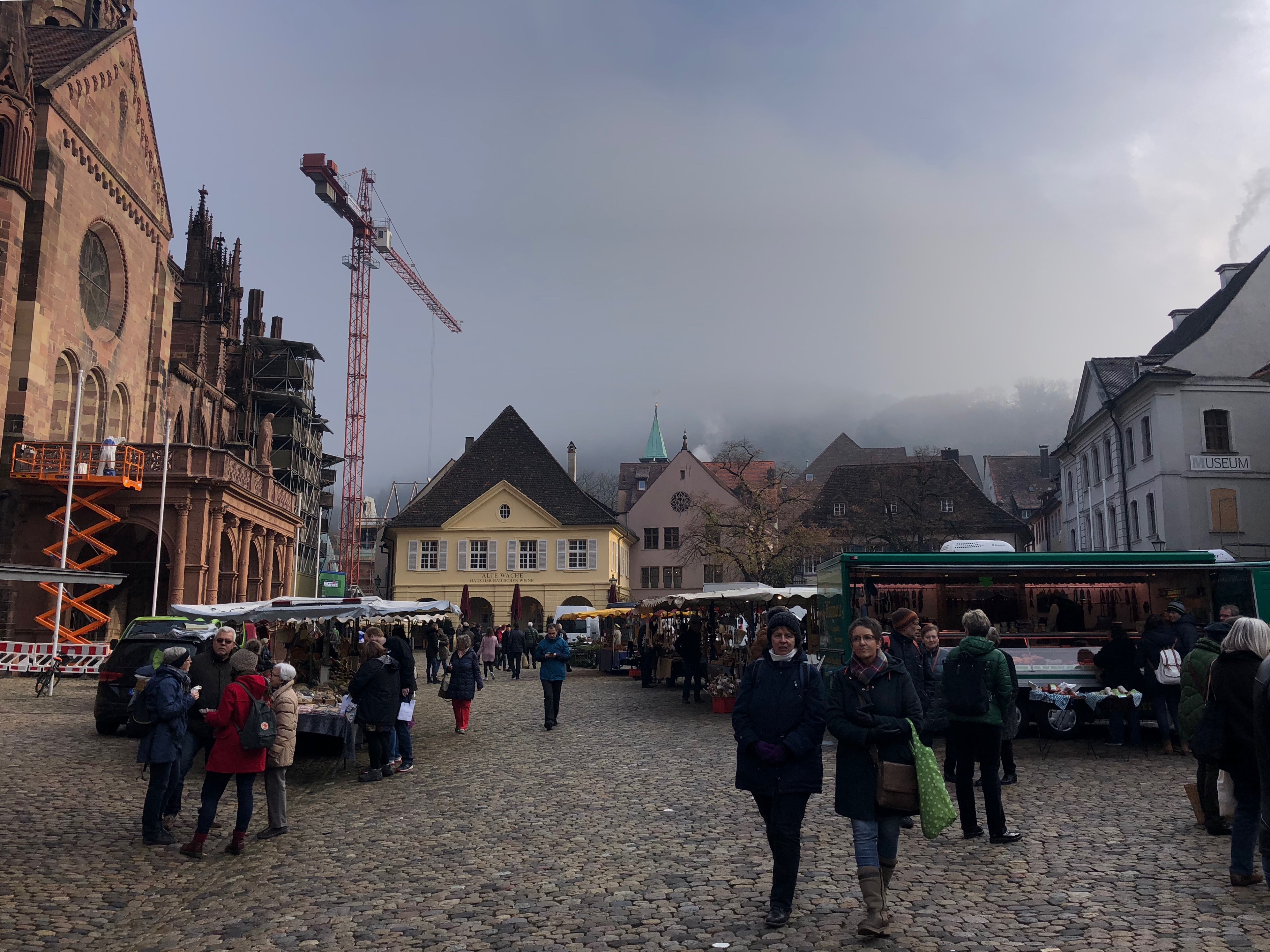
Freiburger Munsterplatz
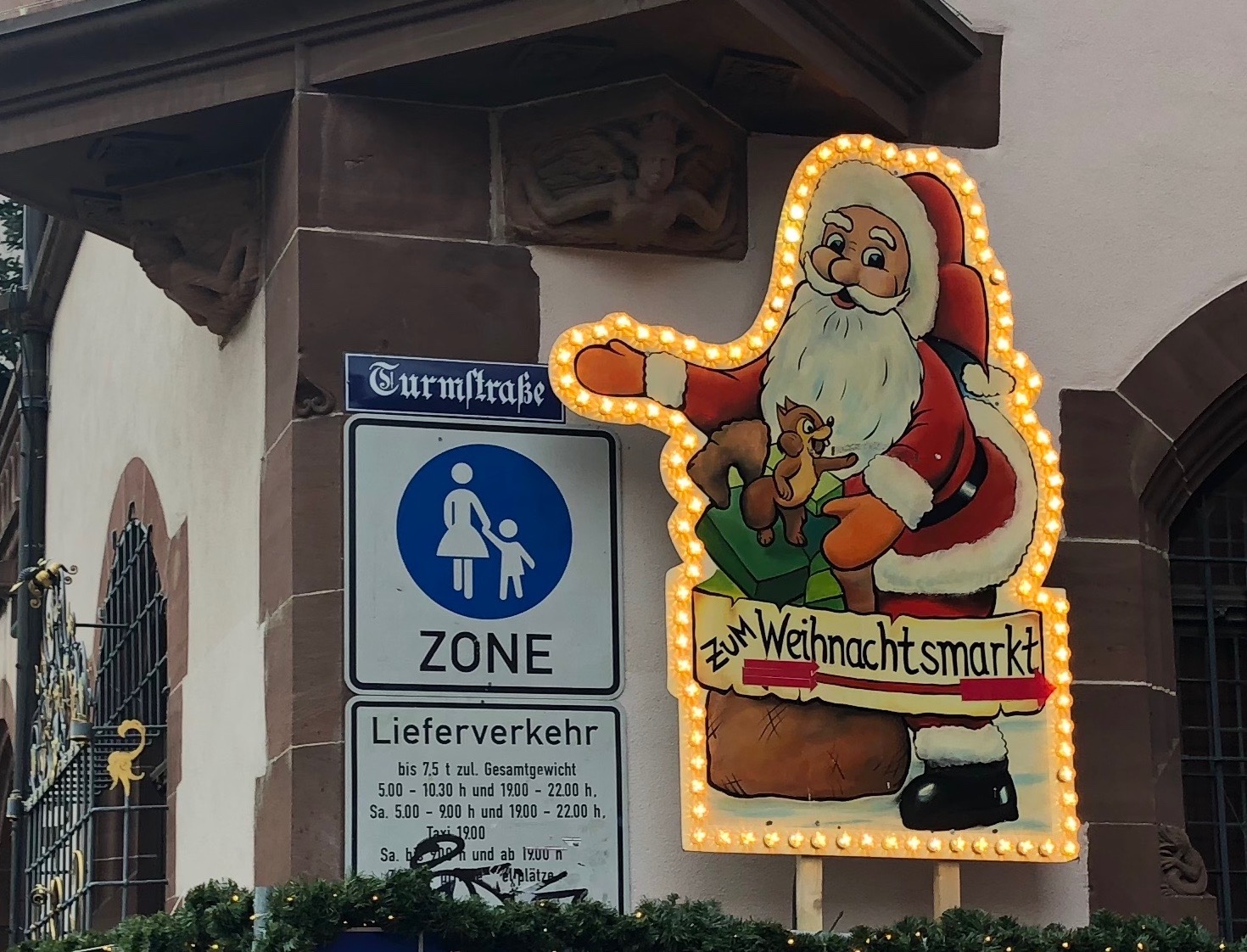
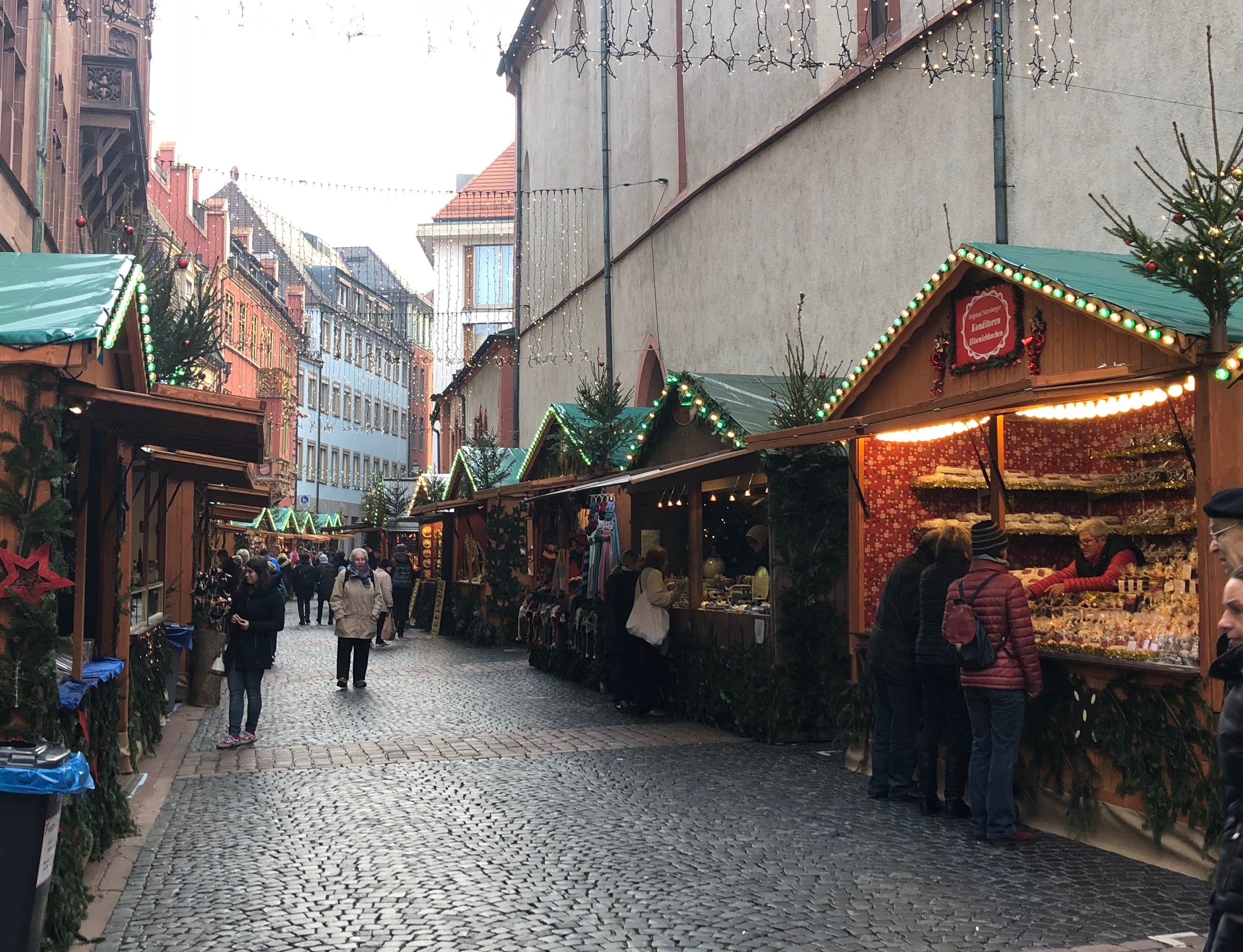
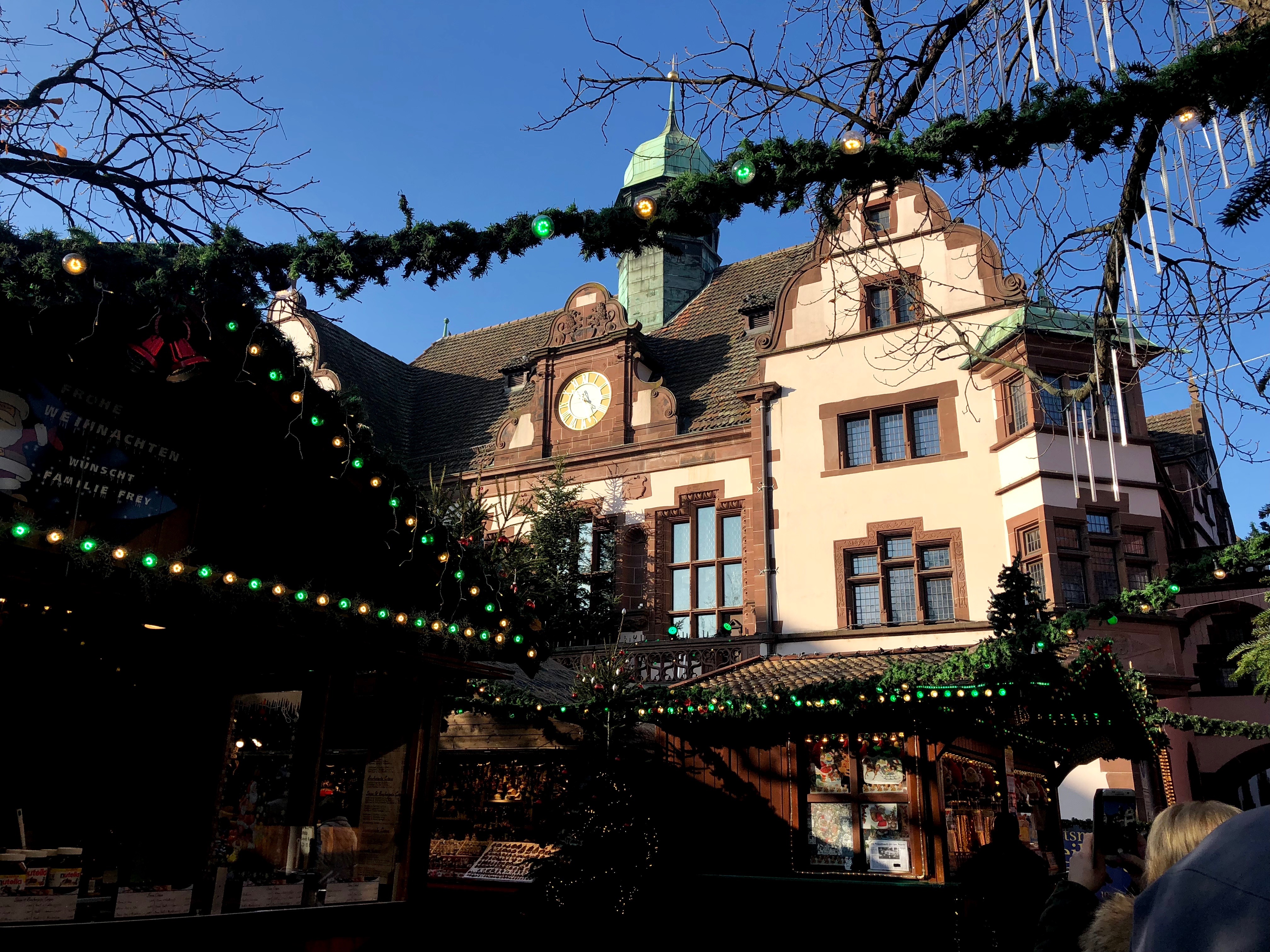
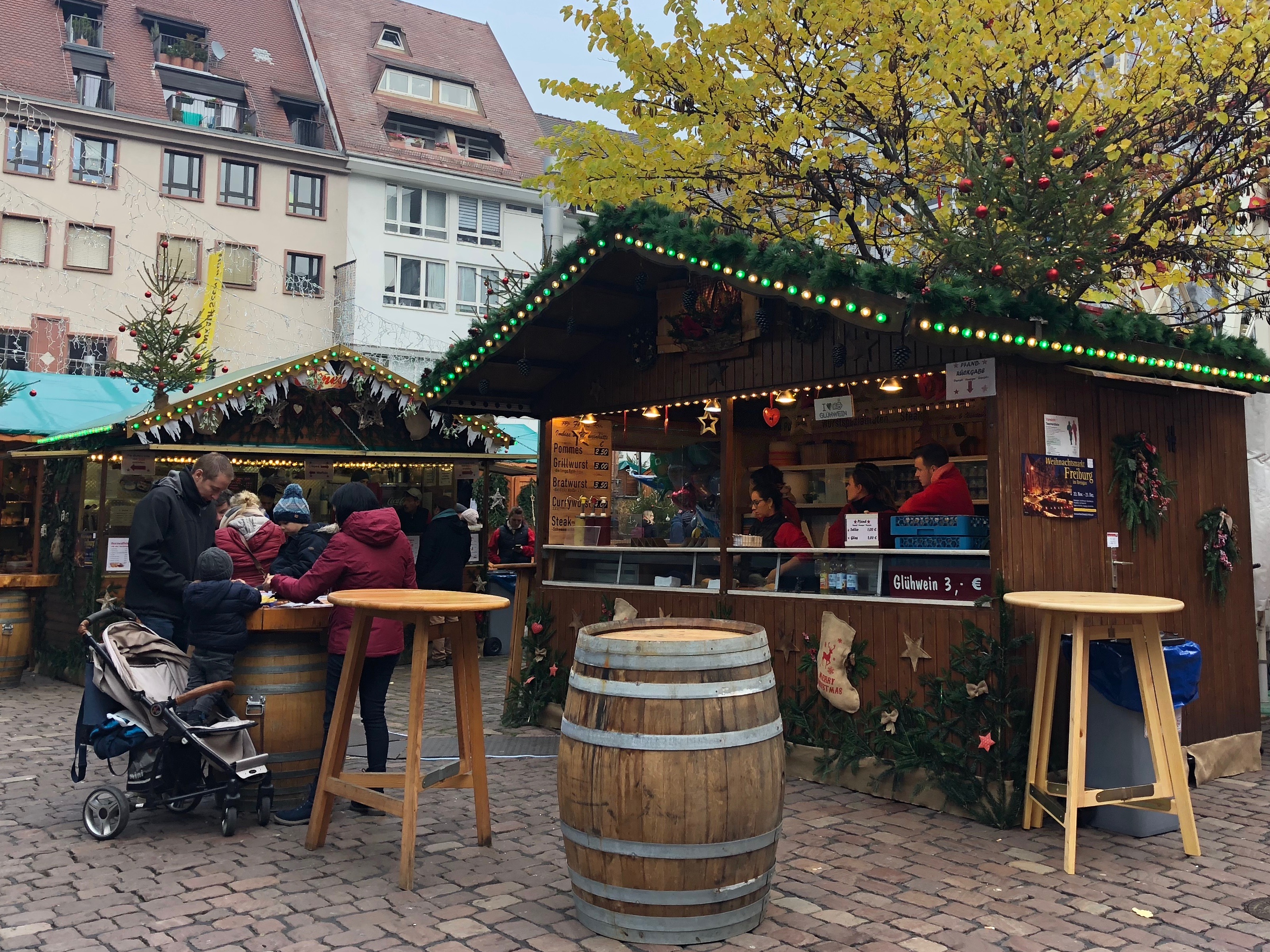
The train ride from Freiburg to Basel was a less an hour, so it wasn’t too bad. Basel is the third most populous city in Switzerland, and is unique in that it sits on the Rhine, at the intersection of itself, France, and Germany. As such, Basel is a hub for transit; we were somewhat familiar with the city passing through it many times previously, although never stepping outside the train station before.
One thing that was a bit annoying was getting Swiss Francs; you’re going to need to stop by an ATM if you want to go shopping at the markets. Also, everything is also a bit more expensive in Switzerland.
Nevertheless, Basel offered another charming Christmas market experience, in a larger setting than Freiburg. There were two main markets in Basel, a larger one in the Barfüsserplatz, and a smaller one by the Münsterplatz. A similar variety of souvenirs, ornaments, and trickets were sold at the many stalls throughout the markets. I ended up picking up a few items, including a snow globe and a music box. As far as food goes, we got another mug of Glühwein, and tried kartoffelpuffer, which is a classic German potato pancake, served with applesauce.
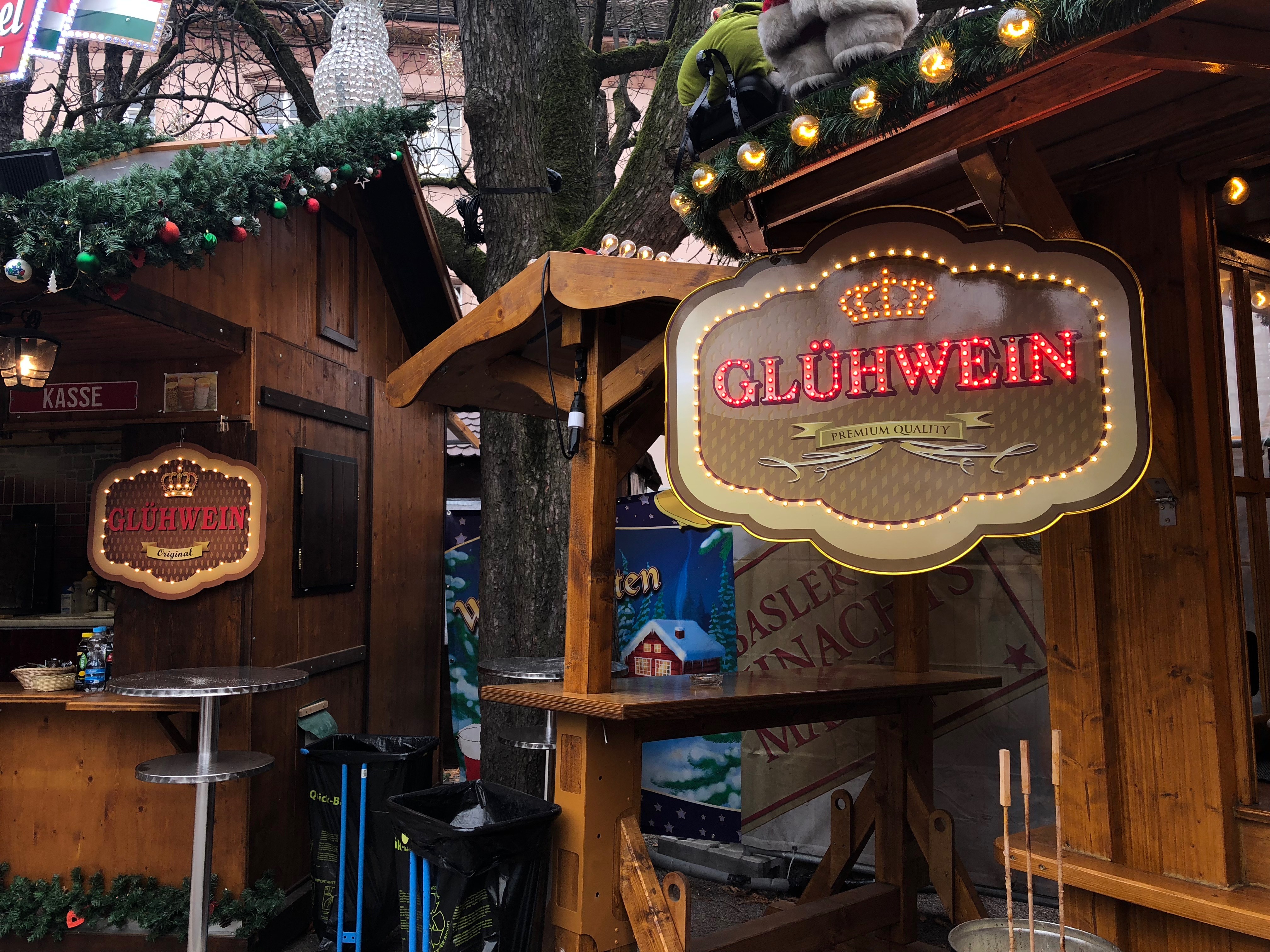
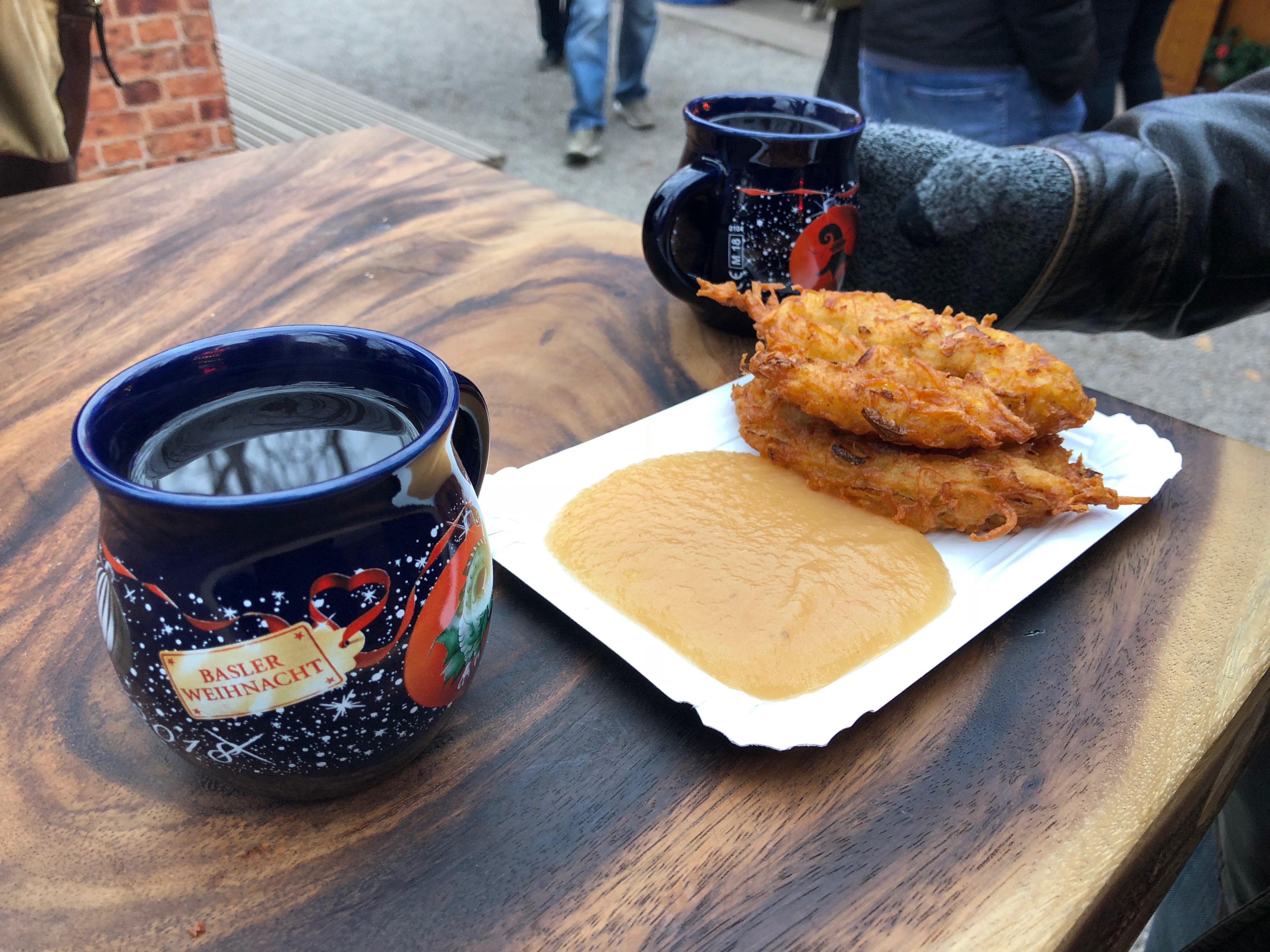
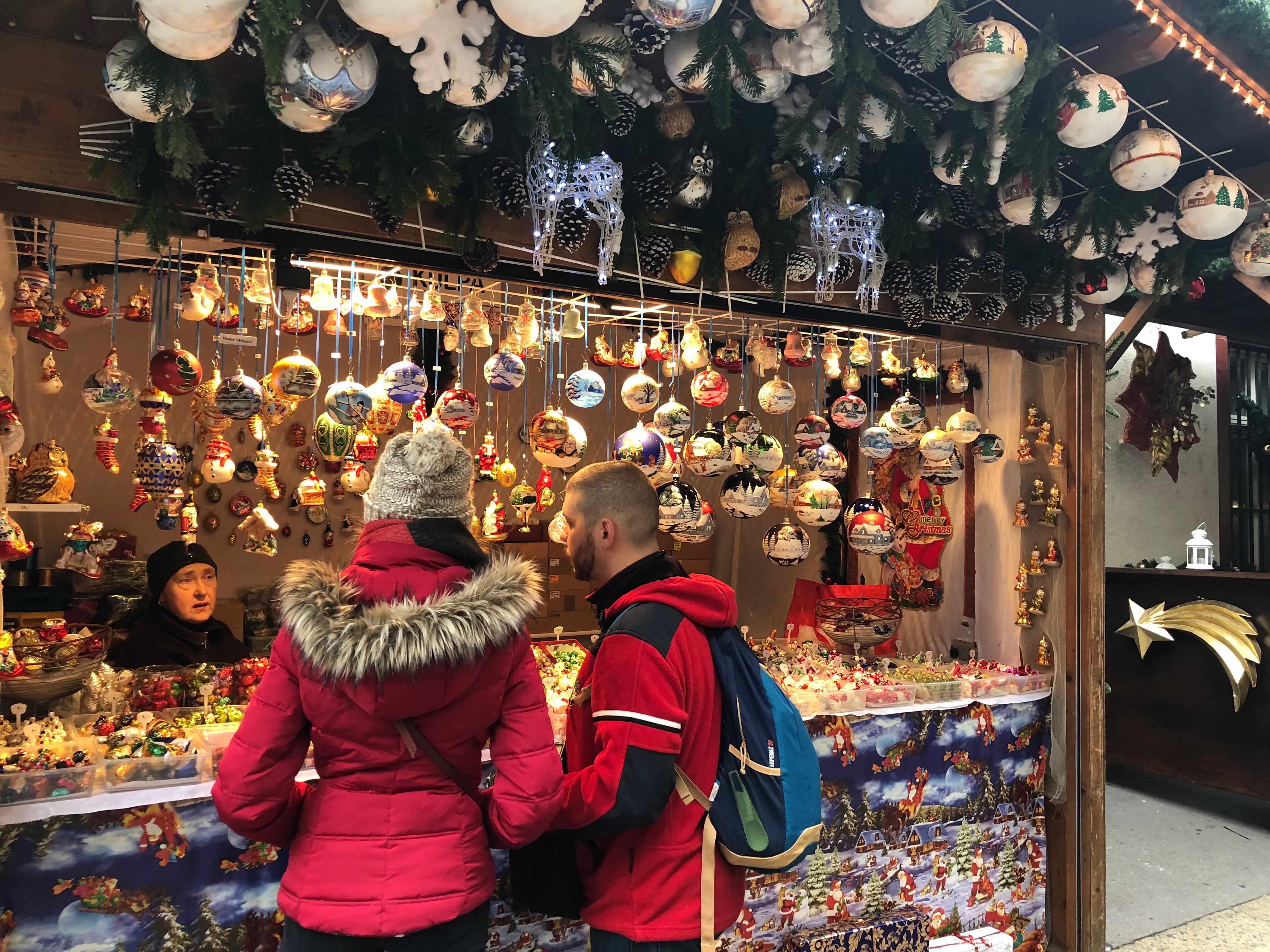
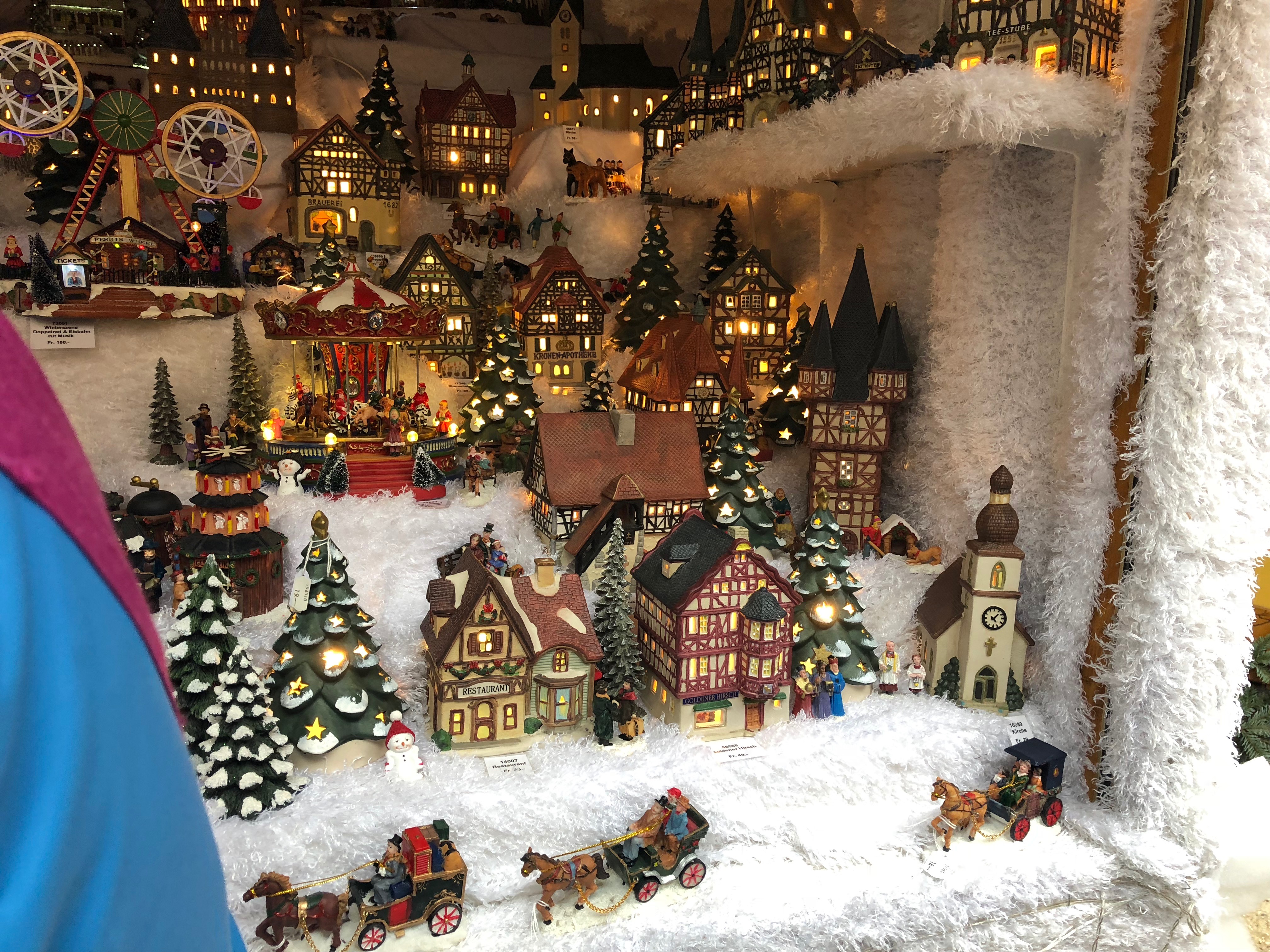
Again, after we finished eating, we headed to the train station, to go to our final stop, Strasbourg, France. We were initially thinking of stopping by Colmar, as it is along the way to Strasbourg, but after looking at the train schedule, we decided to skip it, reluctantly.
After traveling another hour and a half, we finally made it to Strasbourg, our final stop of the day! Strasbourg is home to one of the most famous Christmas markets in all of Europe, so it was no surprise that it was very large and crowded during opening night. They don’t call Strasbourg the Capital of Christmas (Capitale de Noël) for nothing! Coming from the train station, there was a small security checkpoint we had to go through; the armed guards patrolling the area told you about the scale and popularity of this event. Apparently, over 2 million people visit the markets every year, which begins a month before Christmas.
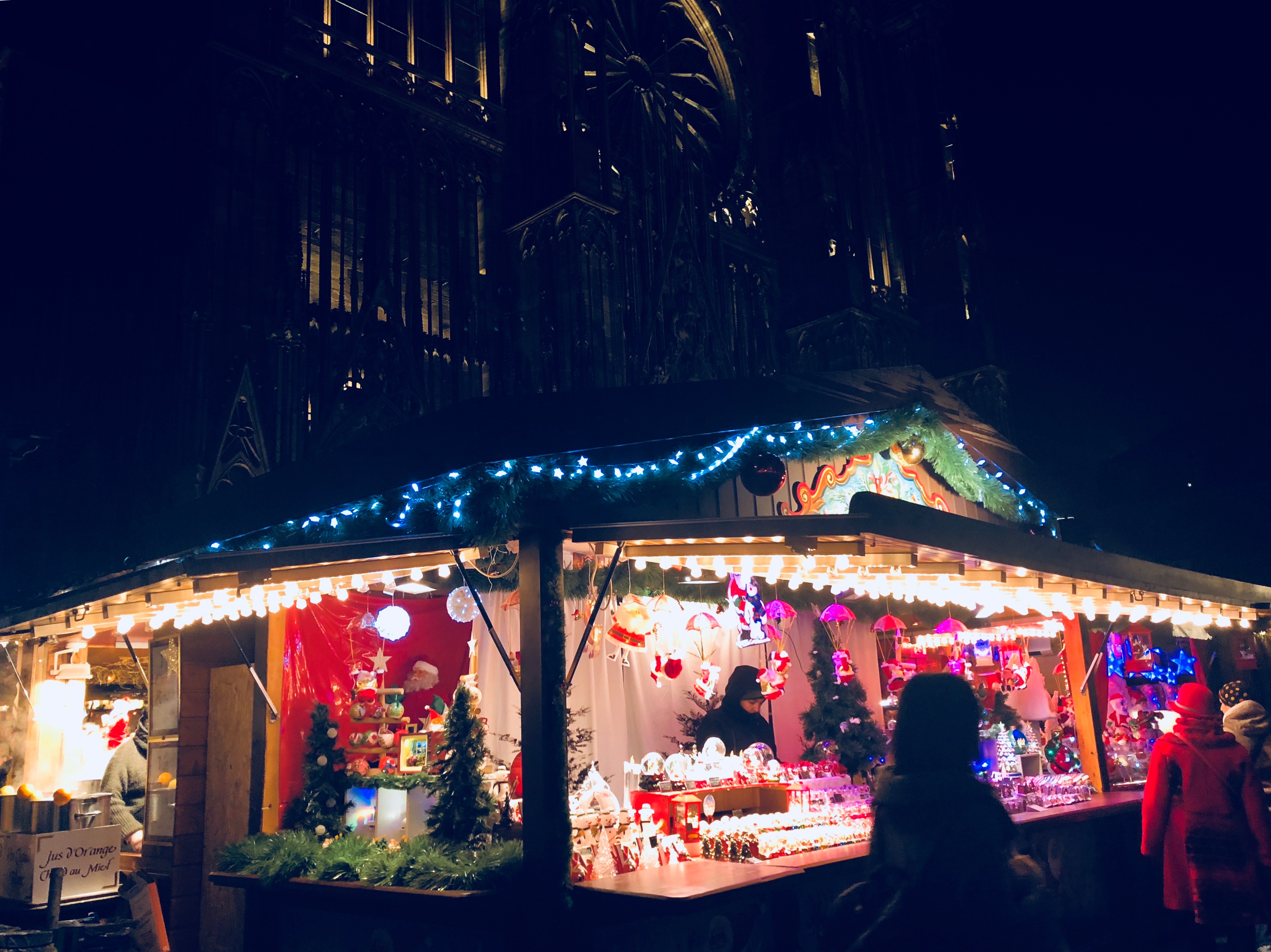
Strasbourg Place de la Cathedral
The Strasbourg Christkindelsmärik was much more grand than the other markets we visited and is spread out between Place Kléber, Place Broglie, and Place de la Cathédral. There were smaller markets inbetween these, but the bulk of the stalls are scattered among these three. The largest one is definitely the one by the cathedral, which offered a large assortment of mademade crafts and ornaments, in addition to a plethora of food options, inluding vin chaud. The variety at the Strasbourg market was so immense; it is a great place to get those last minute souvenirs of Christmas gifts! I ended up buying a nice handmade ornament from a stall ran by a man and his son.
It was also cool to see the whole city light up with decorations. Lights were strung across buildings, windows housed elaborate Christmas scenes, and of course a massive tree was put up.
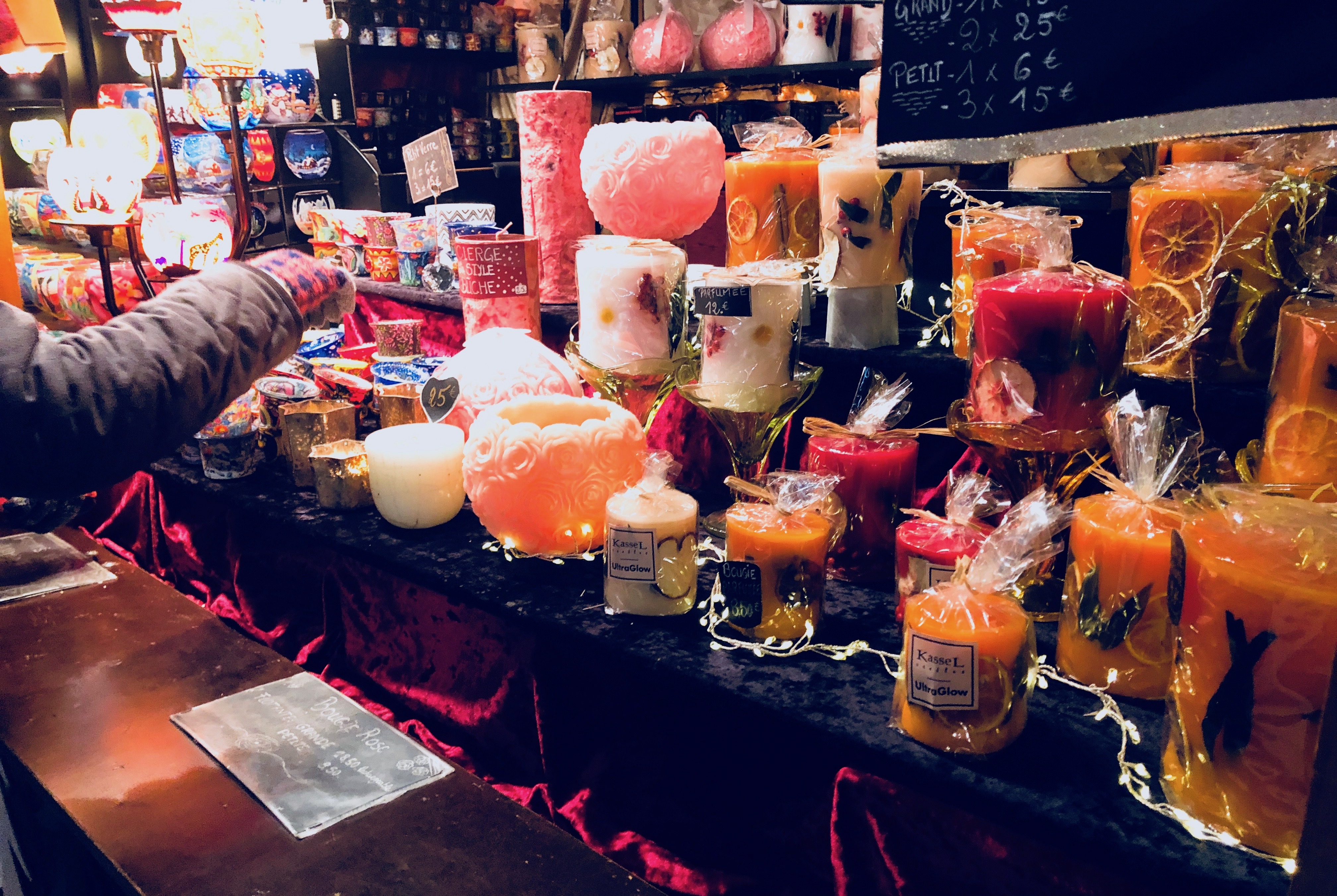
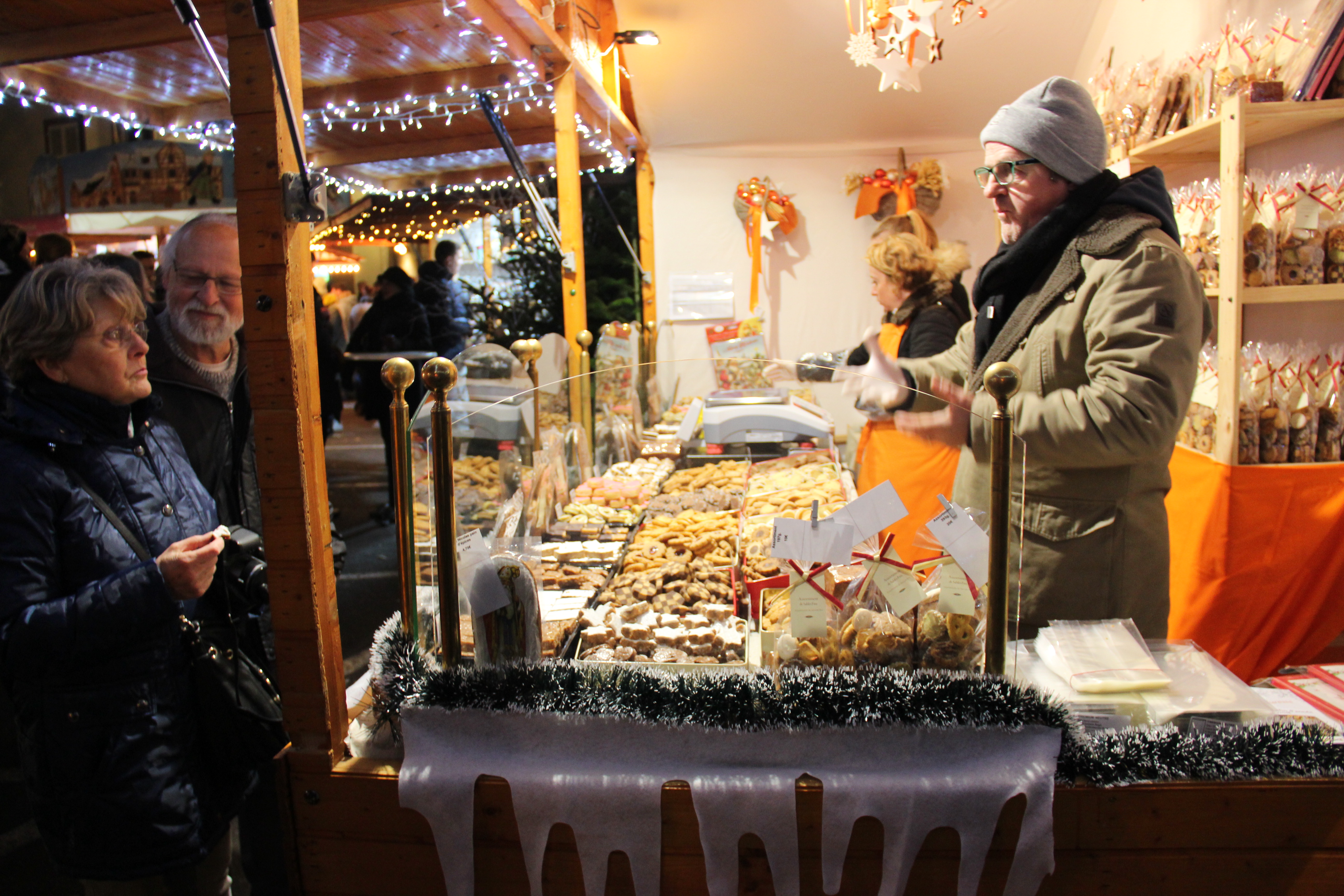
The Strasbourg Christmas market was a wonderful experience with an endless supply of souvenirs and stalls. However, I do feel some of the charm of smaller markets was lost; the Freiburg market was more relaxed and cozy. That is not to say I didn’t enjoy Strasbourg; I still definitly would go again if I had the chance.
We were a little rushed for time, but after exploring the main markets and getting a snack, we left Strasbourg around 7:20 pm, and got back to Metz around 9:00 pm. Needless to say, we were pretty exhausted after our adventure, and all Christmas’ed out for the time being.
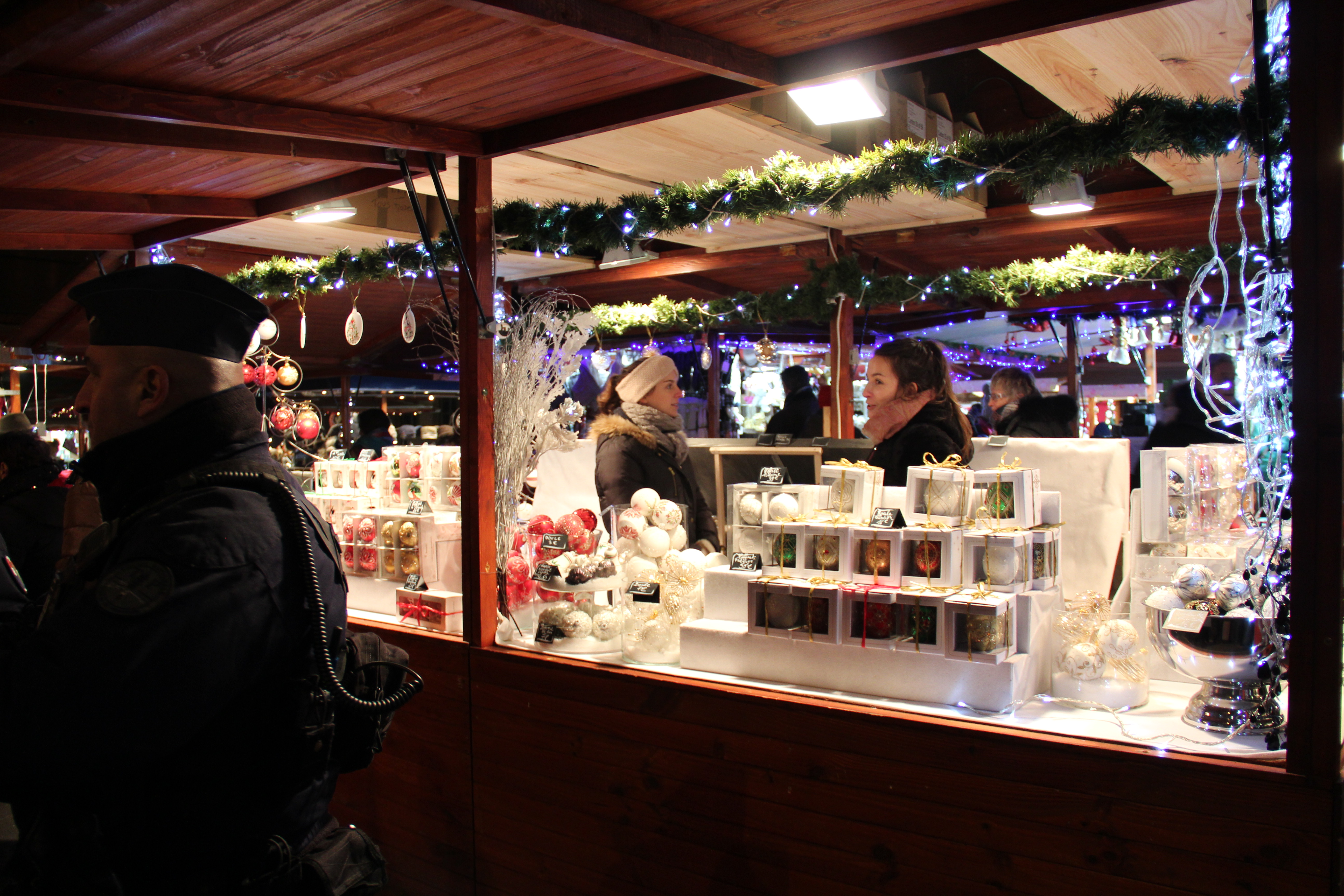
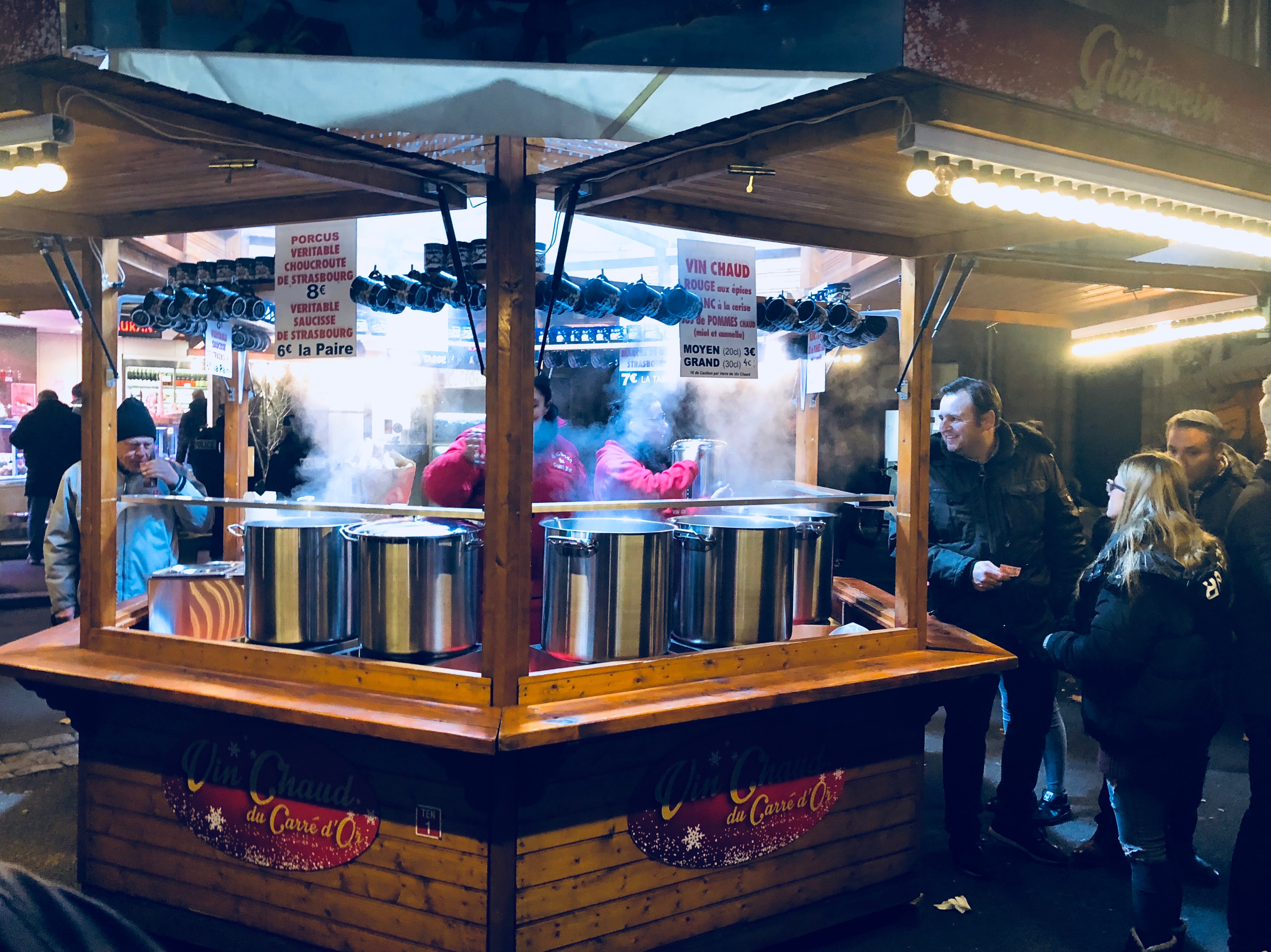
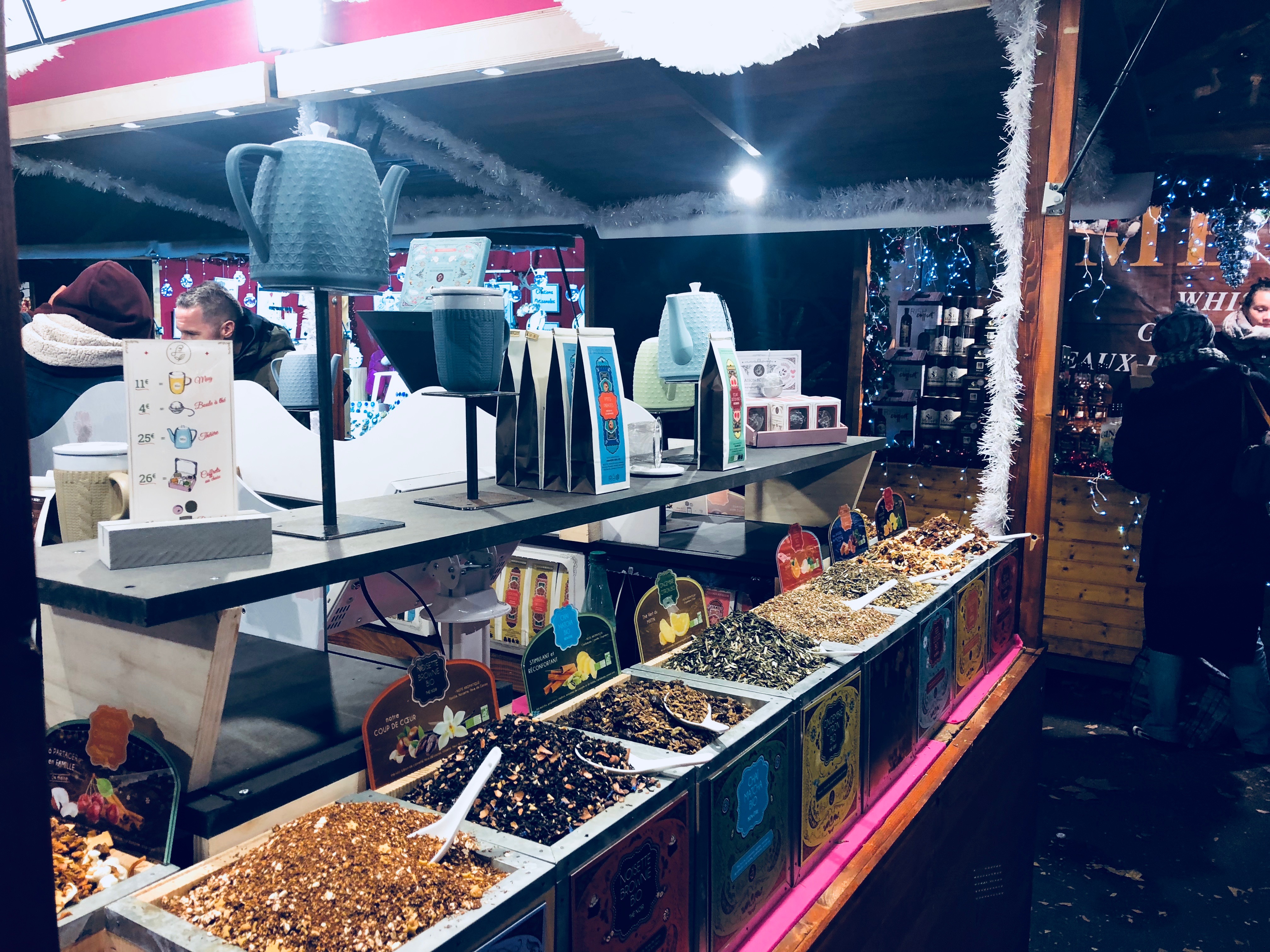
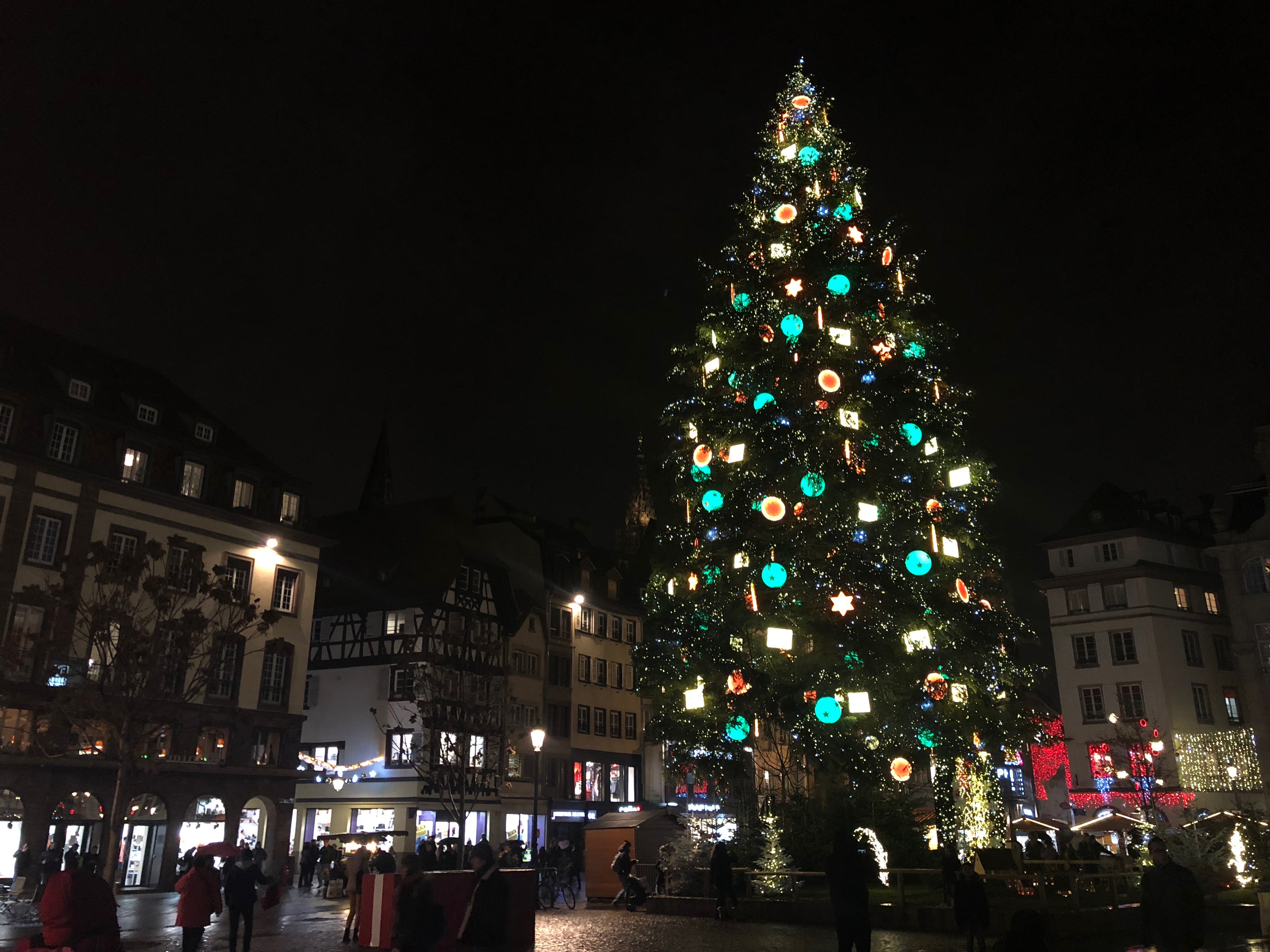
Strasbourg Place de Kleber
